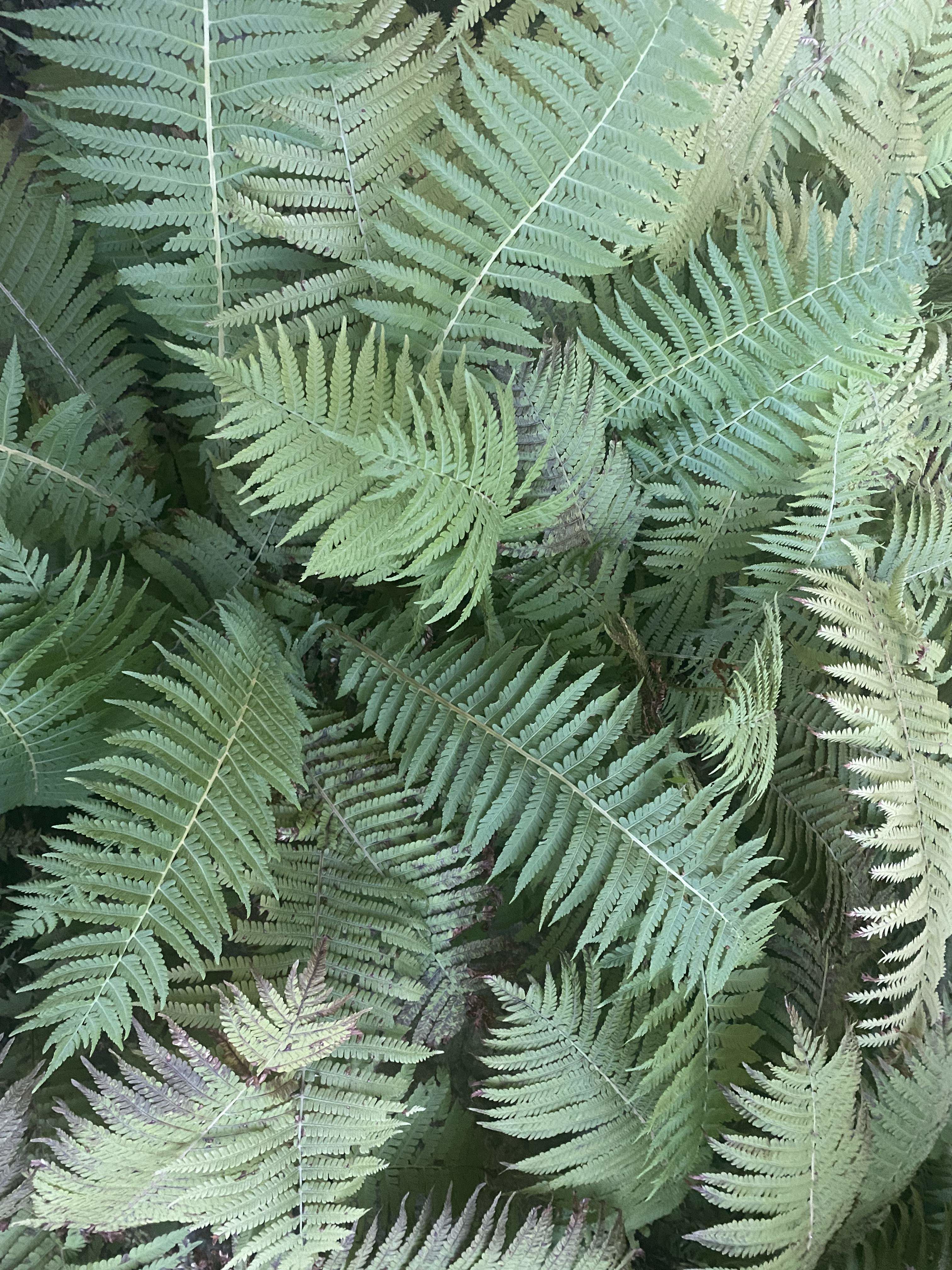Can Plants Make Music?
The journey of a unique sound artist who makes trees and shrubs compose and perform melodies
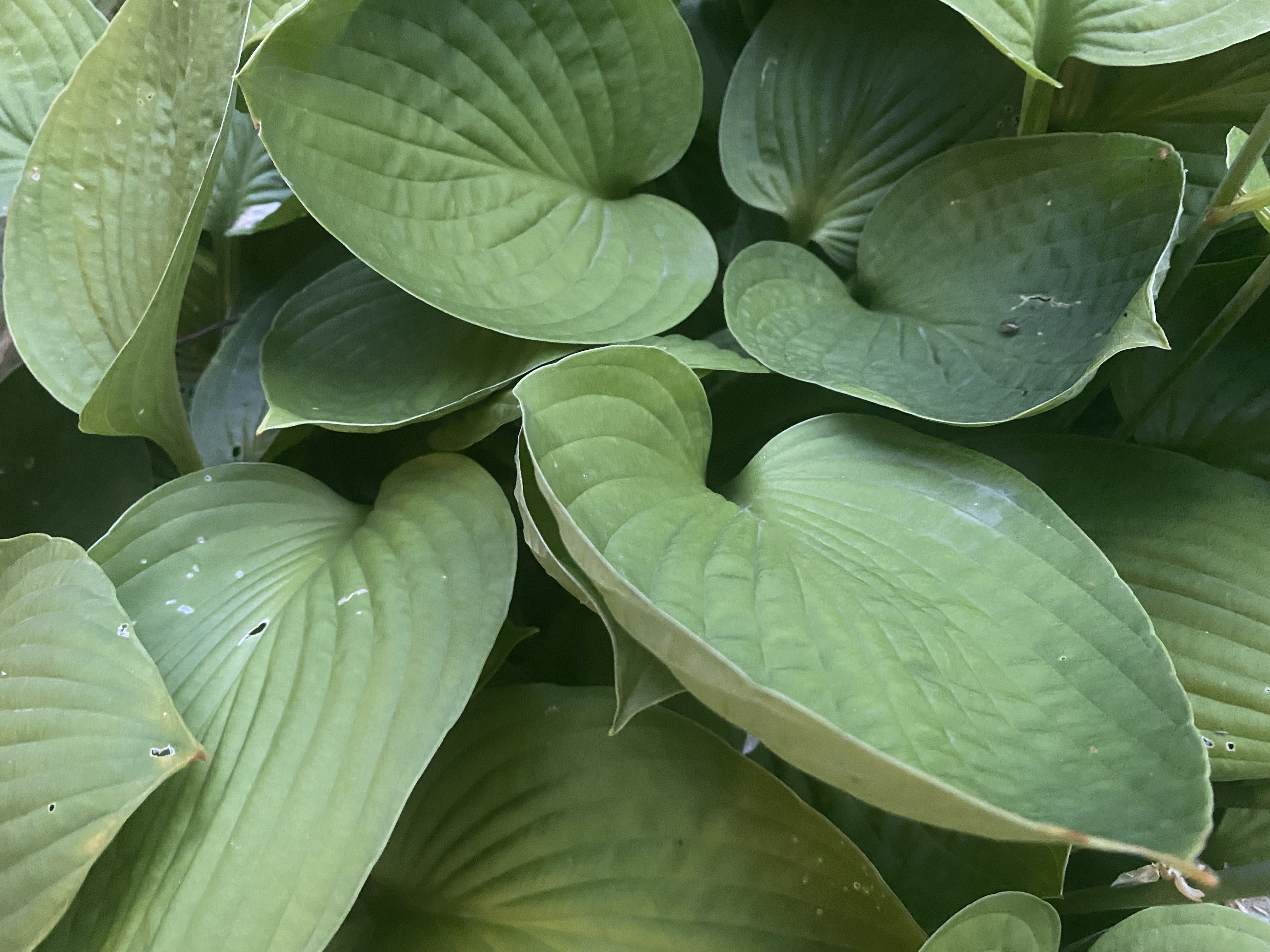

Image by Ophélie Bonavita (https://unsplash.com/@opheliebonavita)
Image by Ophélie Bonavita (https://unsplash.com/@opheliebonavita)
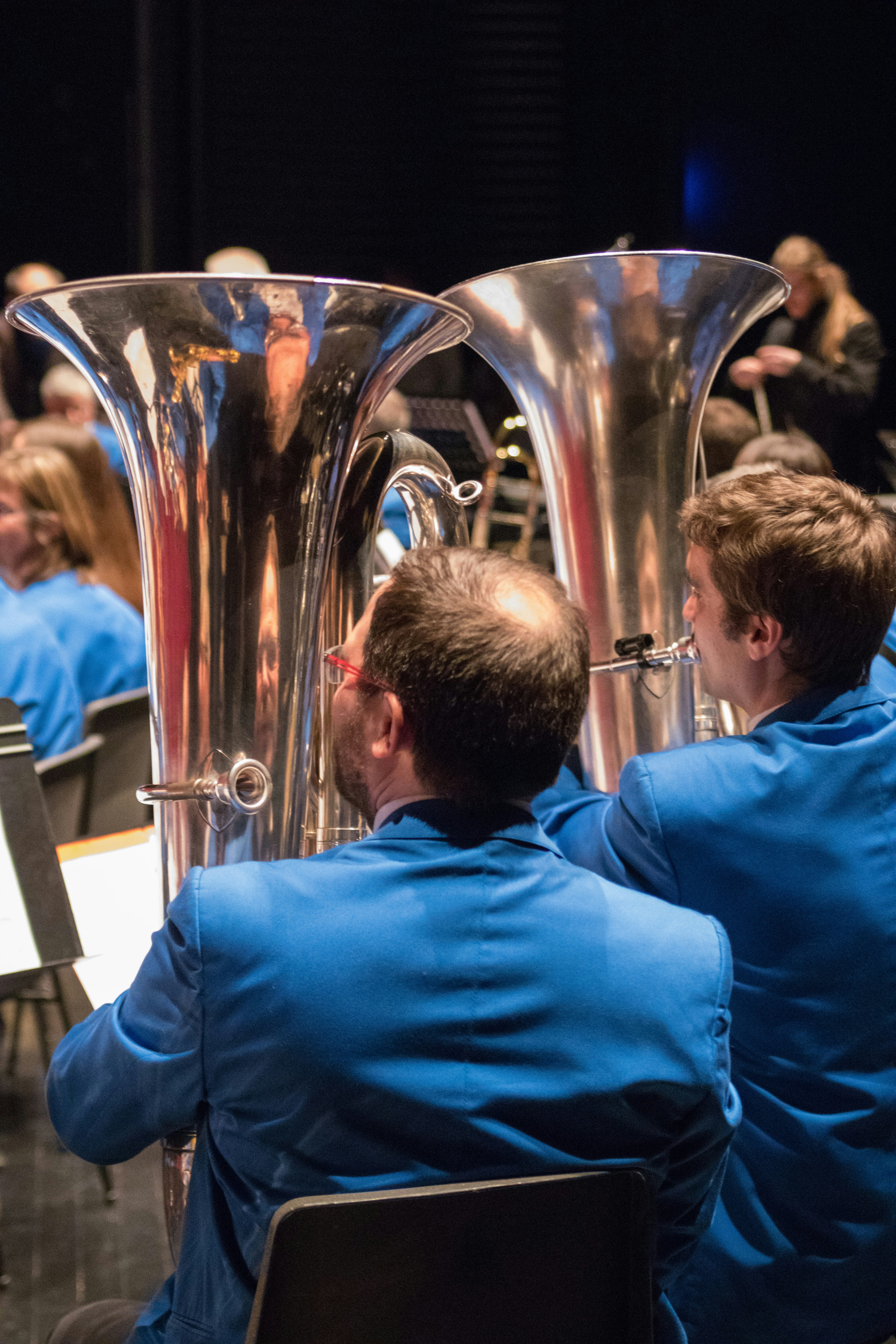
Image by Pierre Goiffon (https://unsplash.com/@pir)
Image by Pierre Goiffon (https://unsplash.com/@pir)
Imagine a nightclub you have been to. There might have been a crowded dance floor illuminated by beams of colourful light, a slightly expensive bar serving all kinds of booze, and a DJ who was busy mixing hit songs of various genres together while vibing with the beats.
Now, imagine the last orchestra you saw on stage. The orchestra might have entered the stage with a conductor who would bring fundamentally different instruments into harmony. The rest of the orchestra, under the instruction of the conductor, might have passionately followed the messy scores in front of them.
But what if all the songs the DJ in the nightclub mixed together were created by plants? What if the orchestra also only consisted of plants? What would the DJ and conductor do in those cases? What kind of music would be produced? And what would the audience think of such performances?
You might think this idea sounds crazy. I would totally feel you, as I could not even entertain the thought of plants making and performing music a few months ago. However, my mind was somewhat opened this April when I encountered an artist called Natural Symphony.
You may ask, what exactly does Natural Symphony do? Or you may ask, why was the word “somewhat” used? Before I answer these questions, let us go to Bali.
Awakening in Bali
Where it all started
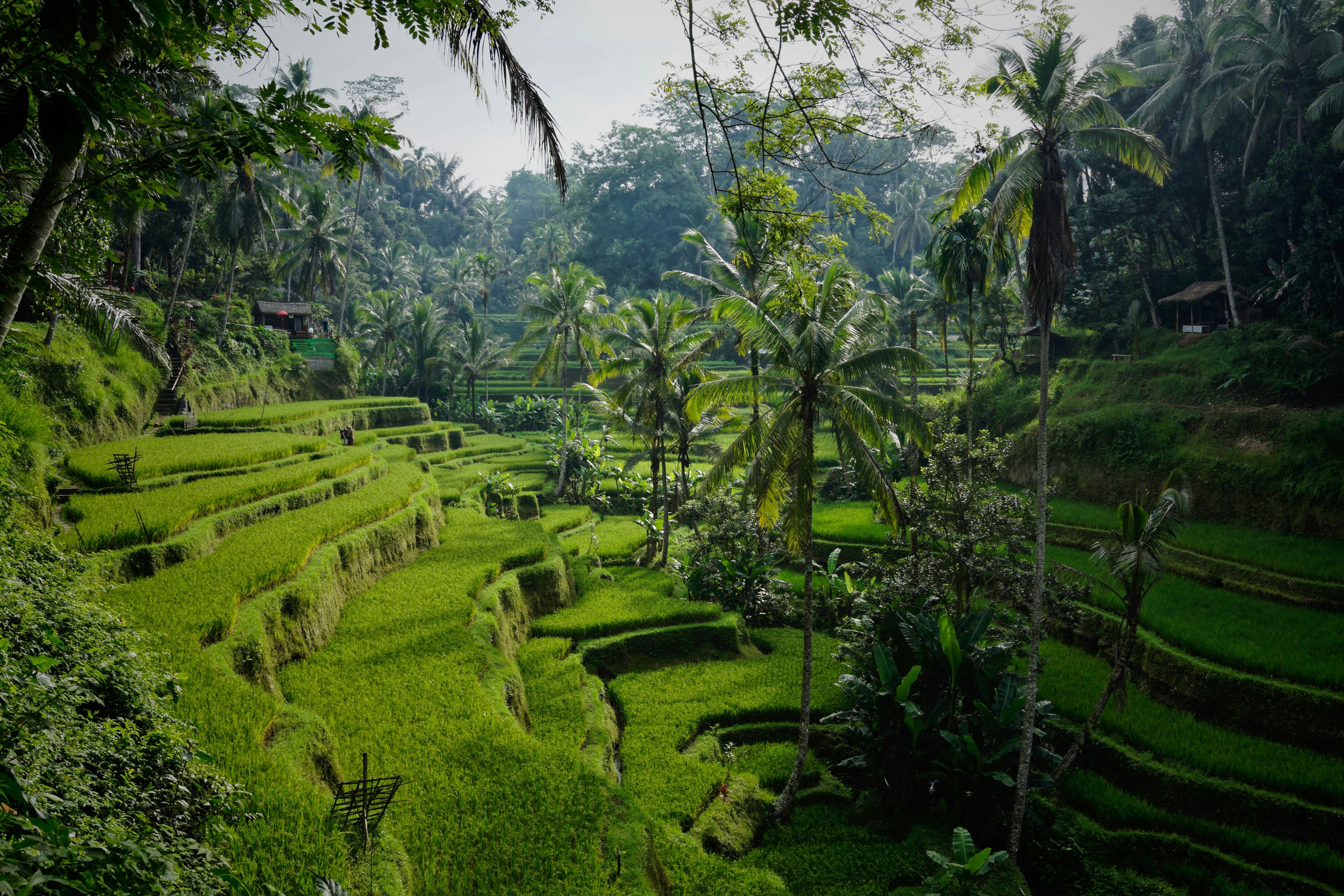
In 2019, ordinary East London DJ and music producer Joey Dean went on holiday to Bali, Indonesia.
In his Bali hostel, he met a woman who advised him to visit the Pyramids of Chi in Ubud, a place where she had a wonderful spiritual ritual experience. Following the woman’s recommendation, he headed to one of the pyramids for a sound healing session, which he did not find that interesting after all.
However, a staff member at the pyramid told him to return the next day for a private sound and light healing ceremony, so he headed back to the pyramid the next night.
“I’m so glad I returned, because it changed my life,” he later recalled.
As he entered the pyramid this time with around eight other attendees, he saw a long tube light in the centre of the pyramid with yoga mats placed underneath it.
He laid on his yoga mat and was asked to close his eyes and relax.
As the first part of the event started, ambient music and rapid flashes of the tube light spread through the room, and Joey started having visions of geometric patterns and colours arranging themselves like a kaleidoscope.
As the event progressed, a vacuum-like space opened in front of Joey, and he slipped into it while immersing himself in bliss and silence. Suddenly, he heard hundreds of voices telling him to follow up with a friend back in the UK to see if he was doing alright. While Joey felt tears on his face, he had no memory of crying.
But it was the final part of the event that changed Joey’s life. As he made himself comfortable again, he suddenly saw a huge tree approach him.
“This tree was showing me how energy transfers between anything that's alive and how people should be careful of their mood,” he said.
The tree went on to tell Joey: “You need to start making music which uplifts people and teaches them about unseen connections – as a whole, humanity’s energy is too low right now.”
That was the moment Joey realised he wanted to do something different in his career. For the rest of the session, he had visions of him playing on the stage with orchestras full of plants.
On his way back home, he kept daydreaming as creative ideas surfaced in his mind.
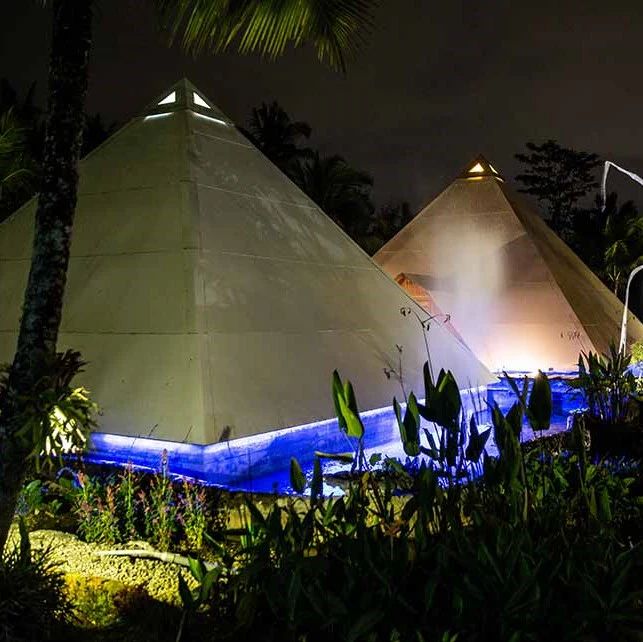
The Pyramids of Chi in Ubud, Bali. (Image by Joseph Dean)
The Pyramids of Chi in Ubud, Bali. (Image by Joseph Dean)

A blurred photo showing various colours taken at a nightclub. (Image by Canqi Li)
A blurred photo showing various colours taken at a nightclub. (Image by Canqi Li)
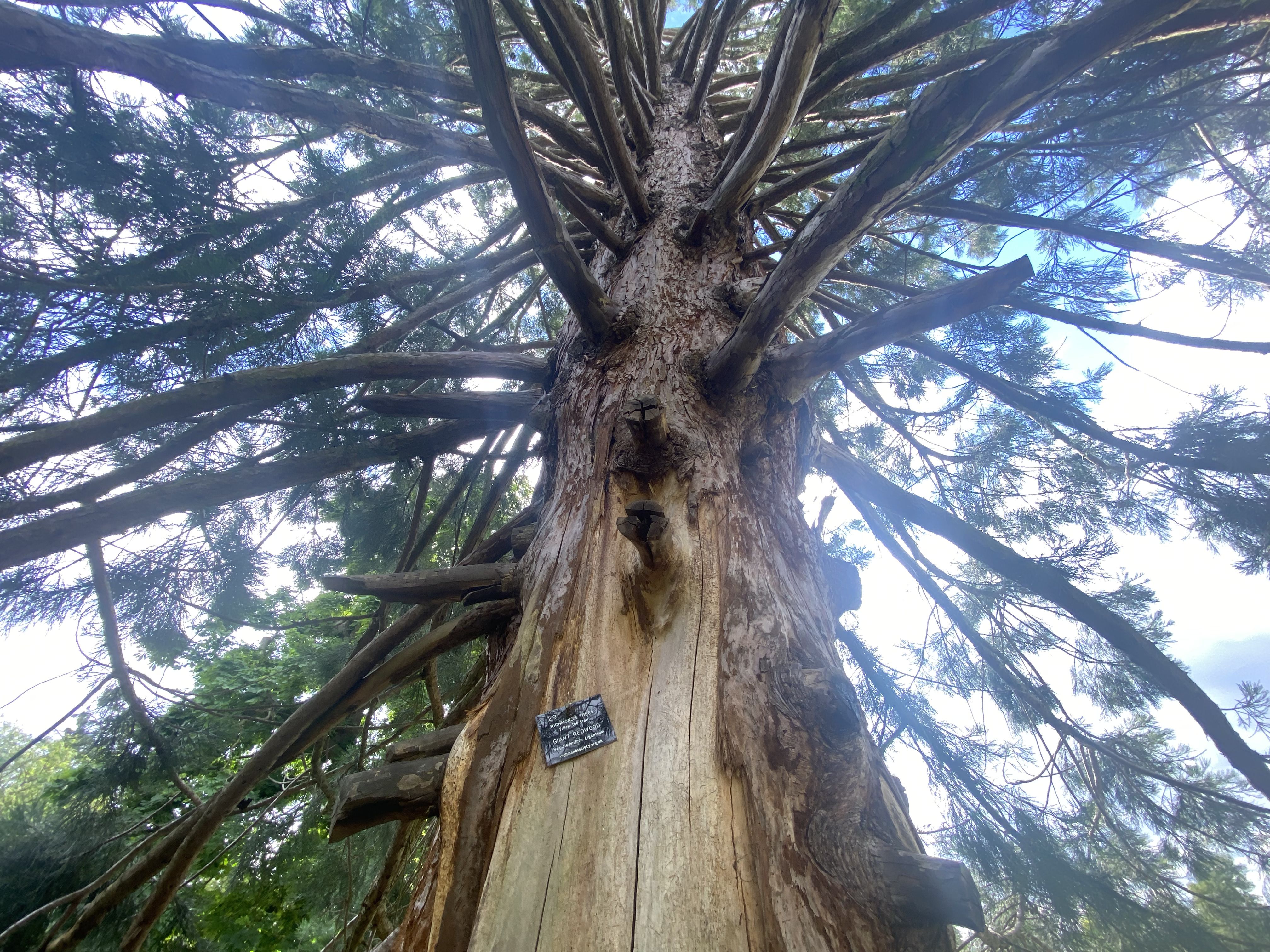
A giant redwood tree in Richmond, London. (Image by Canqi Li)
A giant redwood tree in Richmond, London. (Image by Canqi Li)
Life after Bali
Experimentation and transformation
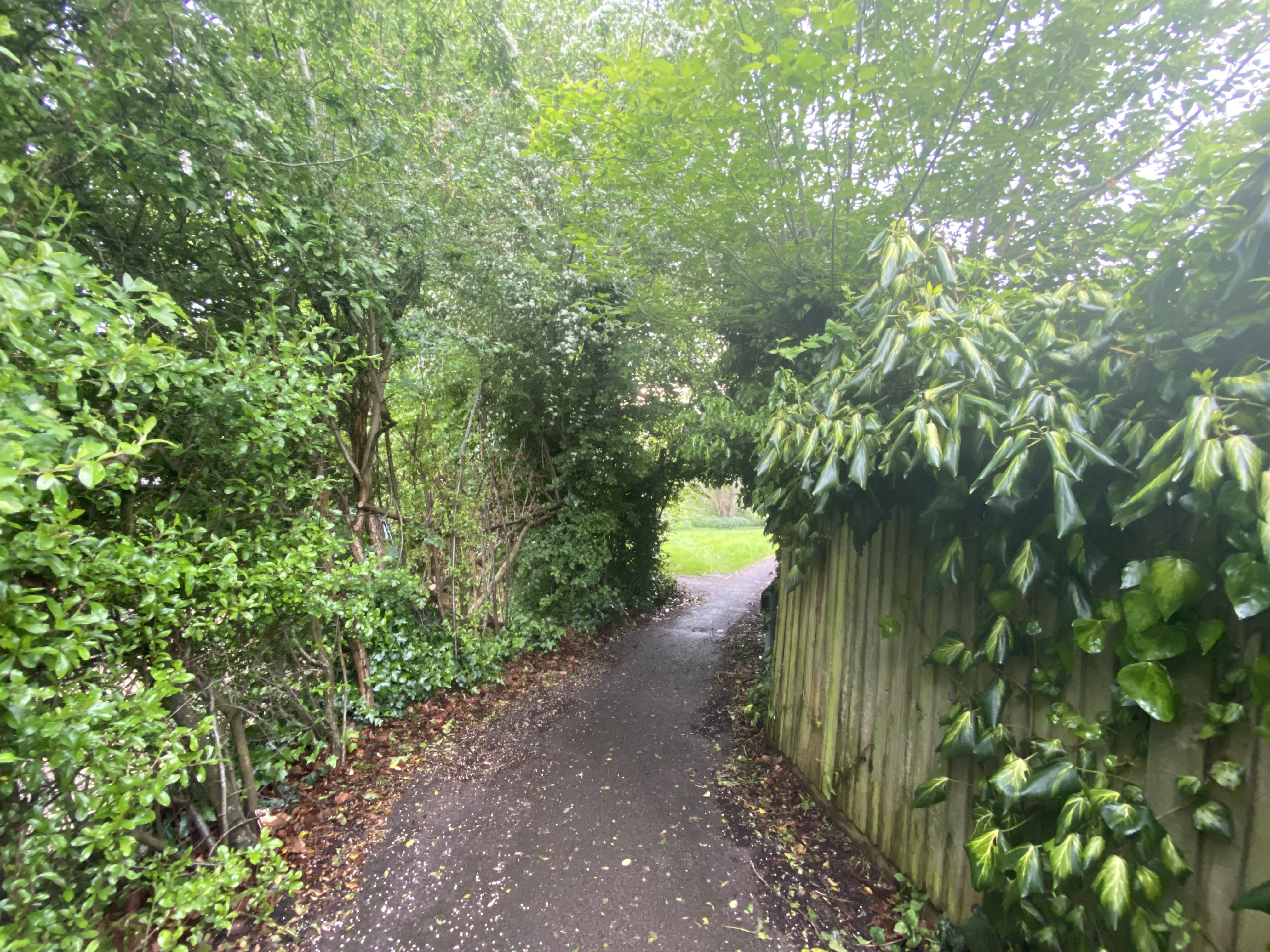
Joey spent the months following his Bali visit contemplating whether incorporating plants in his music projects was an idea too crazy to entertain.
But then, COVID lockdown came, and so did a lot of time for experimentation.
“I developed different ways to detect signals in a plant – I knew if I was able to get data from the plant, I would be able to use that data to control sound and light instruments,” he noted.
He started doing lots of research on lie detectors and learned they work on plants the same way they do on humans. Amazed by this realisation, he built a machine based on a lie detector measuring the electrical fluctuations within leaves.
Soon, the machine became a project where Joey could make plants and trees control sound and light instruments. He also started creating installations and sound healing projects with the help of plants – at his sound healing sessions, he now makes plants play what he calls “ancient healing tones”.
With this transformation came a number of thrilling opportunities. Joey, with his plants, was now able to perform on the stages of Glastonbury and the Royal Chelsea Flower Show – stages that he had always dreamed of.
And this marks the birth of Natural Symphony, Joey’s new artistic self.
Natural Symphony's 2022 Glastonbury Festival performance with plants
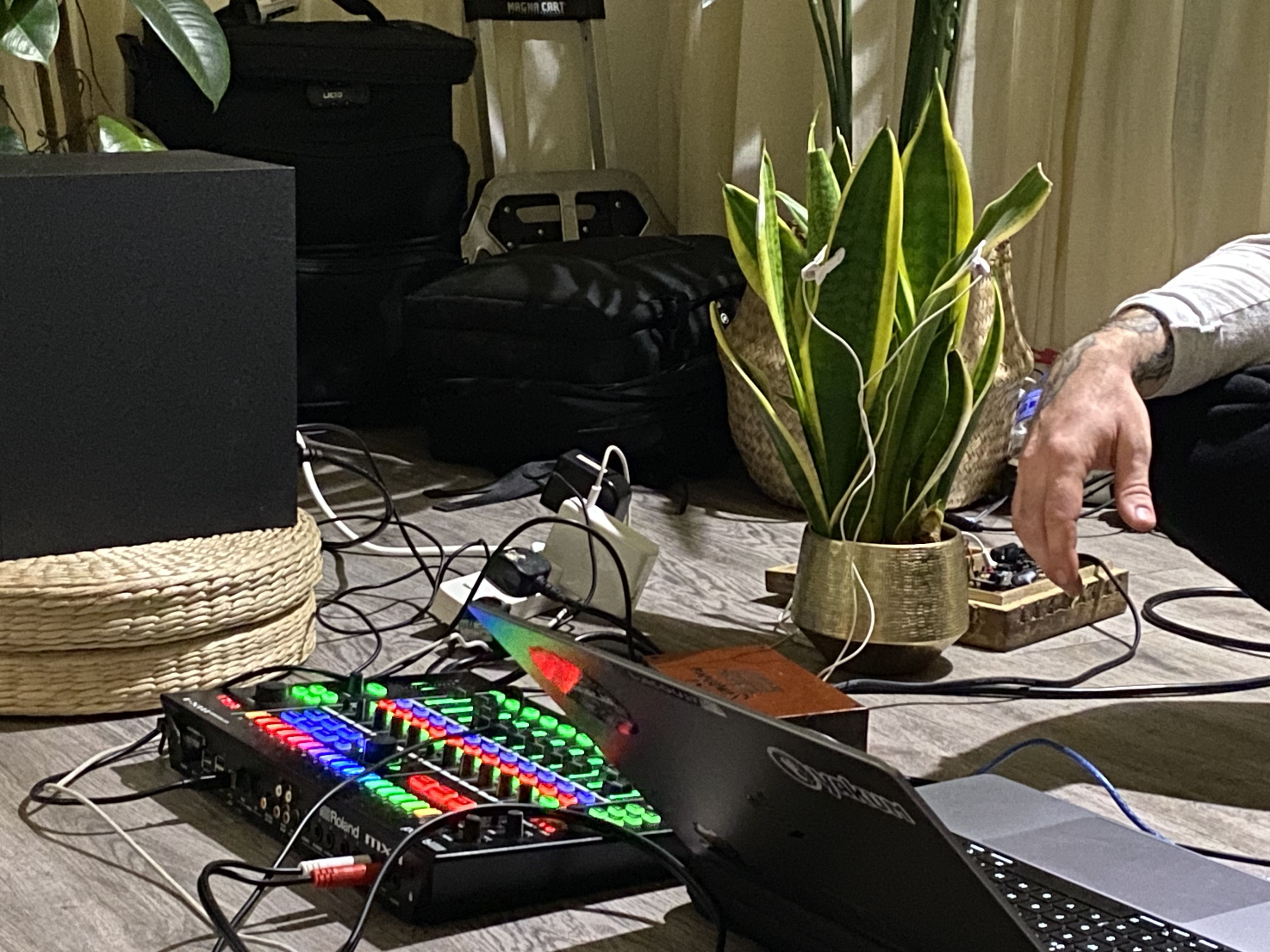
A house plant with Natural Symphony's lie detectors on its leaves connected to electronic music production devices. (Image by Canqi Li)
A house plant with Natural Symphony's lie detectors on its leaves connected to electronic music production devices. (Image by Canqi Li)
Giving back to nature
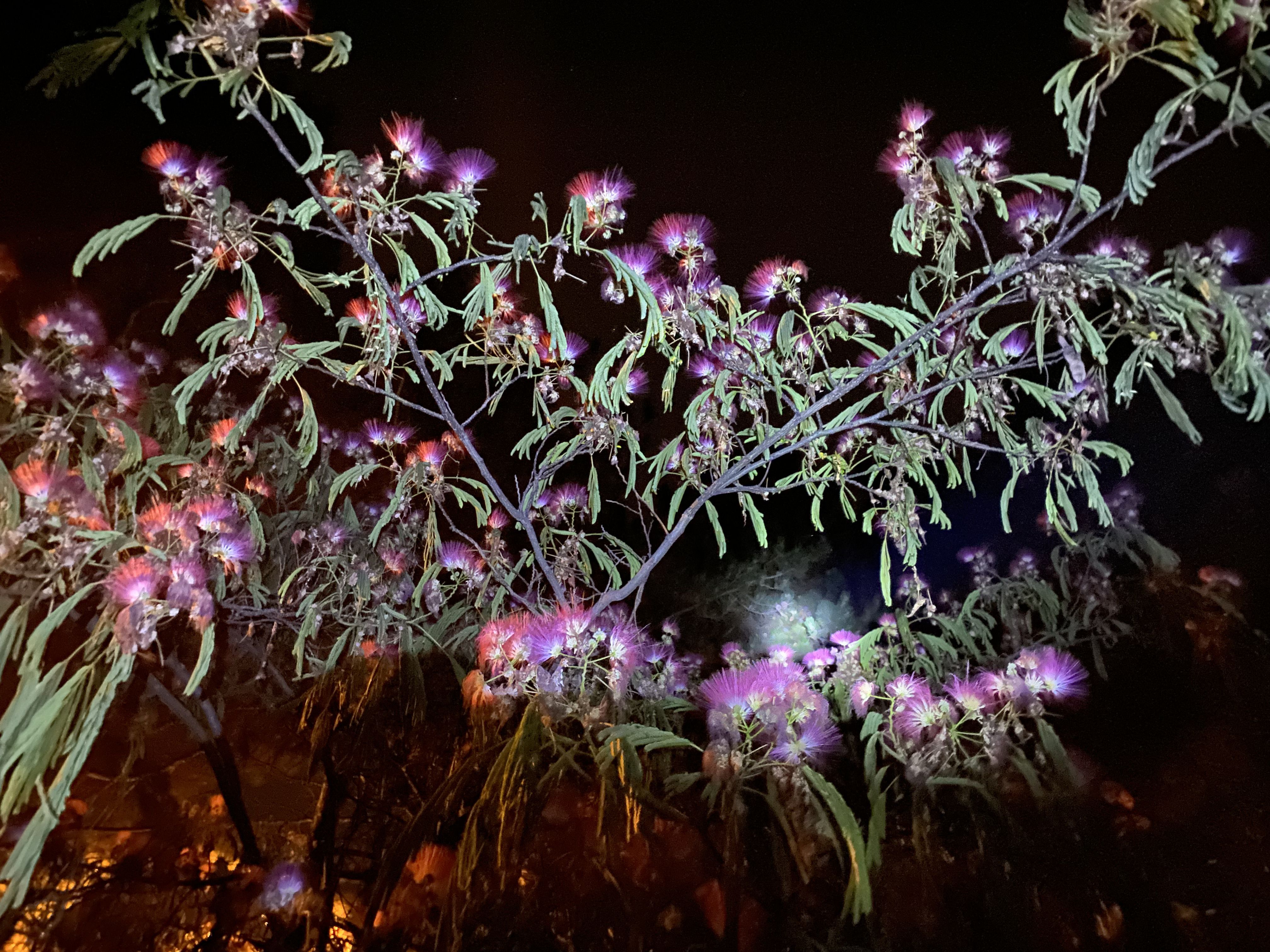
Now a successful plant musician, Natural Symphony started thinking about how he should invest the money he had earned from his performances.
“I didn't really feel like I could just continue what I did – making music with plants – and keep the money for myself, when actually, half of the music was created by the plants,” he recalled.
“Although I have an influence on what the plants are going to control, it's also them controlling,” he added.
Even though Natural Symphony knew he wanted to give his earnings back to plants and trees, he did not initially know where to start.
After going through a business deal that seemed to be a scam, he eventually connected with indigenous people in the Amazon jungle through a friend.
As of today, all of Natural Symphony’s track sales and merchandise profits reportedly go straight to YAKUM, an organisation that has replanted more than a hundred hectares of food, medicinal plants, and trees in the Amazon rainforest.

A pack of guayusa tea, a daily drink among indigenous communities in the Ecuadorian Amazon. (Image by Canqi Li)
A pack of guayusa tea, a daily drink among indigenous communities in the Ecuadorian Amazon. (Image by Canqi Li)
Collaborating with rainforest communities on nature projects has also brought lots of personal adventures for Natural Symphony. So far, he has visited the rainforest twice – during his travels, he cleaned his body in an Amazon river while scared of being eaten alive by crocodiles, learned about strange fruits such as mini custard-tasting pineapples and ice cream beans, and most memorably, took part in an early morning spiritual ceremony where he had ayahuasca tea and chilli poured into his nostrils and eyes, respectively.
“It is a completely different world compared to the UK – it took me more adjusting to get used to being back in the UK than it initially did to being in the rainforest,” he recalled.
Canqi Li interviews Natural Symphony on his early morning ayahuasca and chilli ritual in the Amazon and how he felt about his rainforest travels as a while at his Earth Day sound and light healing session on April 21
Besides showing himself a new way of life, Natural Symphony’s Amazon adventures may also open the minds of other people in the form of a documentary film set to be released later this year.
How exactly Natural Symphony makes music with plants
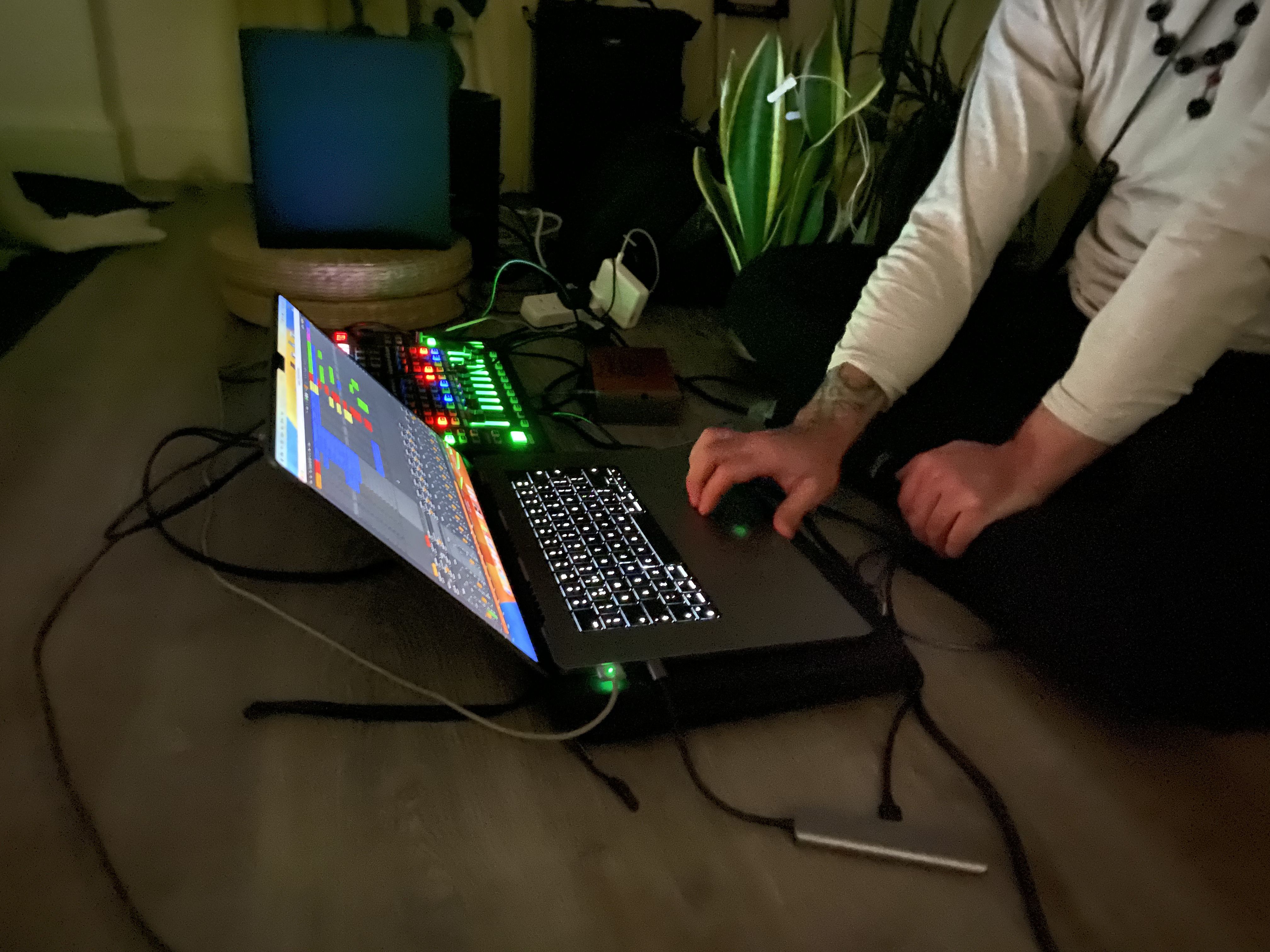
As we all know, plants cannot be musicians the way humans can be. However, just like humans, plants are living beings. Because of this, Natural Symphony transforms them into performing artists through a process called sonification.
According to a Royal Society article, sonification is defined as the conversion of data into non-verbal sound. To perform this conversion, Natural Symphony first places a lie detector on the surface of a plant to measure fluctuations in its electrical properties, which is also known as the galvanic skin response of the surface.
After receiving the range of numerical galvanic skin response values from the lie detector, Natural Symphony then matches them with musical frequencies. For example, he would match a galvanic skin response value of 0.1 to a C note on the keyboard and a galvanic skin response value of 0.2 to a D note on the keyboard, and so on.
However, as plants can be quite spontaneous with their galvanic skin responses, Natural Symphony conducts the number-note matches with the help of a code.
“If I was to just let the plant perform as it wants to, it would sound really out of key. So, the first pieces of code I've made would knock the value up and down one or two, so they always land in the key,” he said.
“I've made another piece of code which would knock the value left or right so that the notes always land in time with beats. Without these two sets of codes, the plants could only make sounds that don’t seem too melodic – you probably wouldn't be able to listen to it for too long without it being pretty jarring,” he continued.
Essentially, by tidying up the noise that the plant surface has produced through sonification, the pieces of code Natural Symphony has created make it way more listenable.
The codes Natural Symphony has often used recently basically autotunes the sonified galvanic skin responses of plants into what he calls “healing frequencies” – such as 432 Hz, which he calls “the natural frequency”, and 528 Hz, which he calls “the love frequency”.
With this technique, Natural Symphony has not only transformed house plants but also a ceiba tree in the Amazon rainforest, ayahuasca, crystals, and mushrooms into musicians.
Ayahuasca plants playing "music" on Natural Symphony's TikTok page.
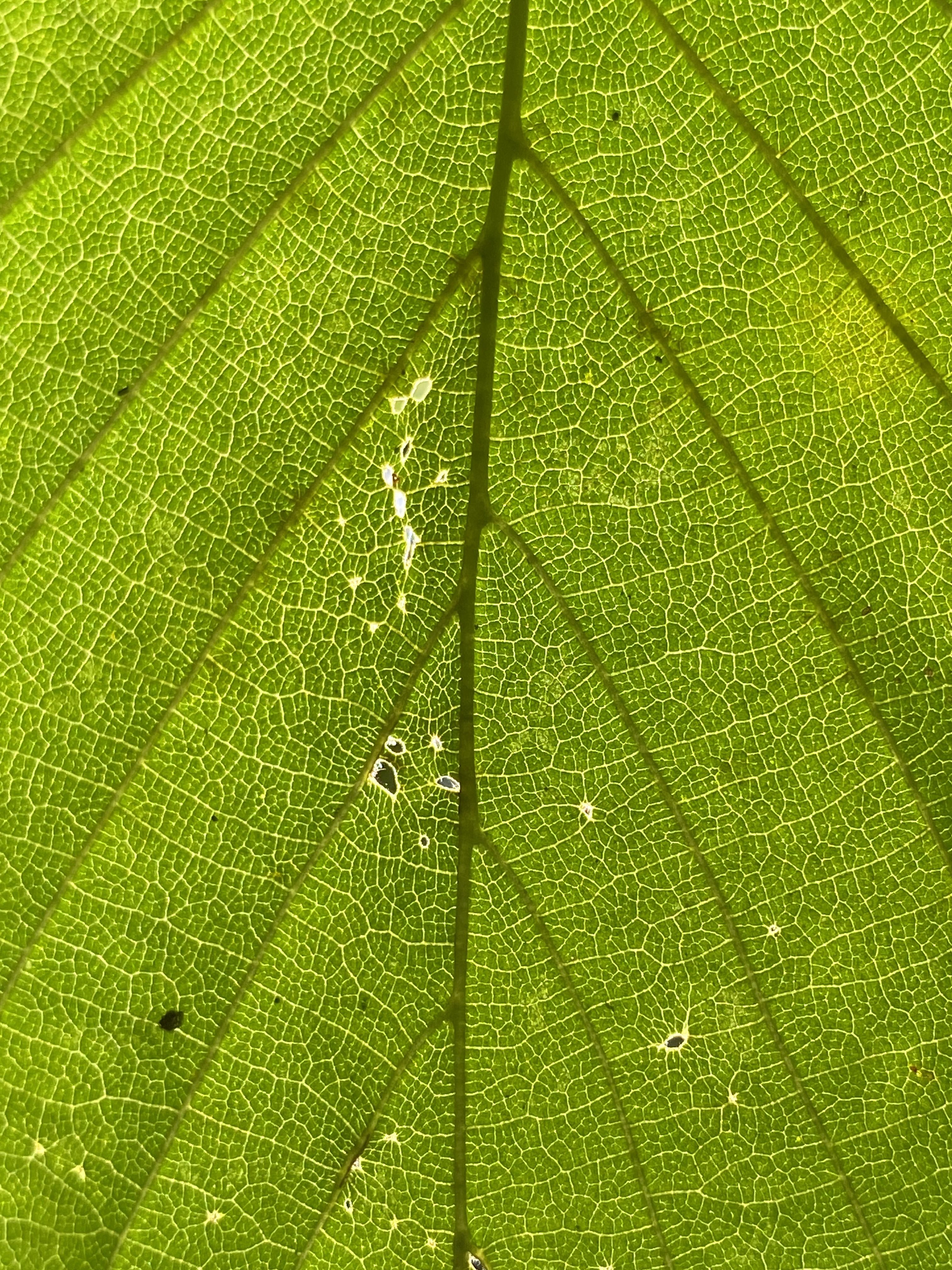
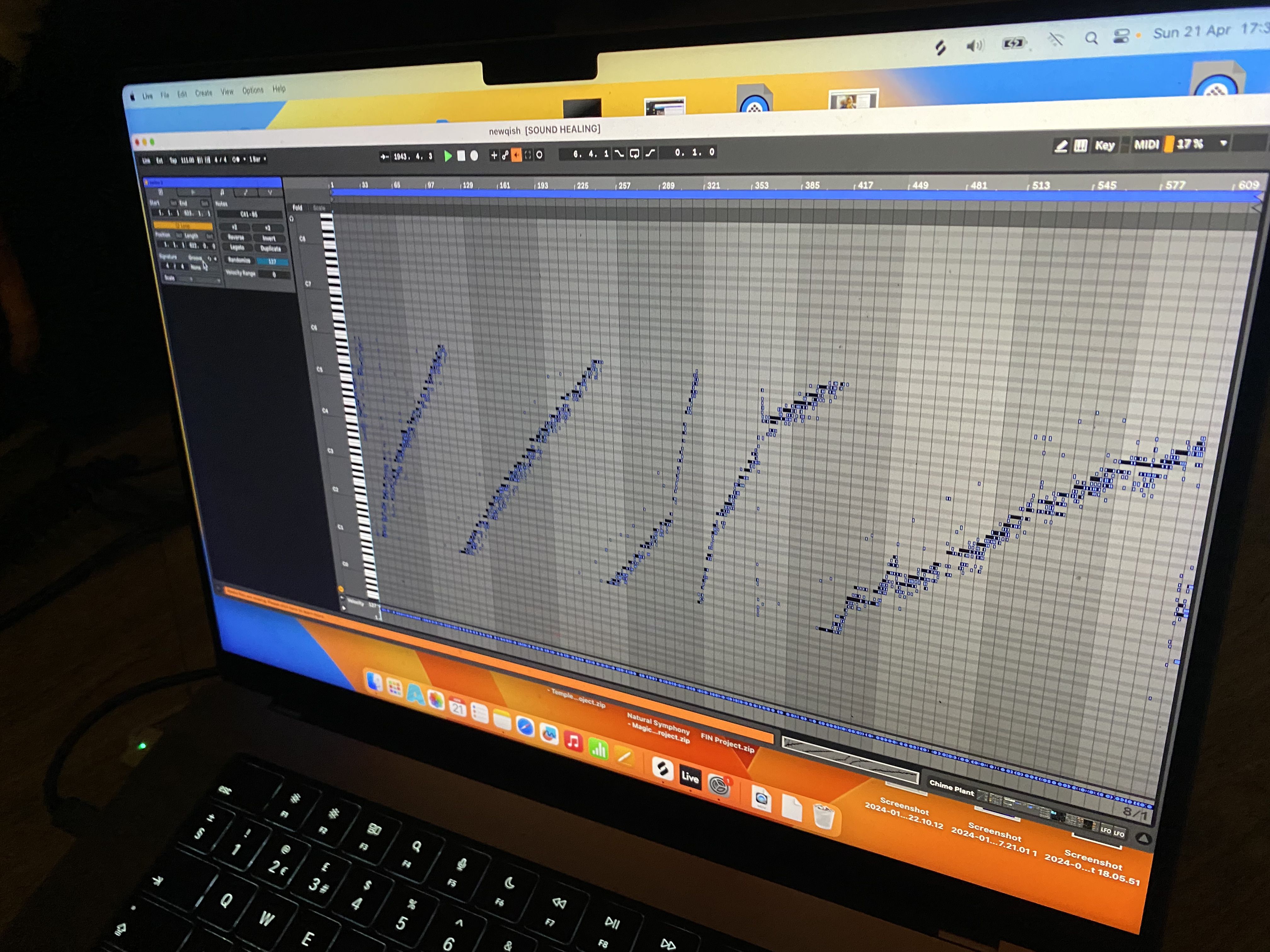
Music-making with plants
An overview

After learning about what exactly Natural Symphony does, you may ask: “Is he the only artist so far to make music with plants?”
The answer is complicated. It is definitely a “no” if you are wondering if he is the first ever person to involve plants or trees in music-making.
Humans have made musical instruments using plants since prehistoric times. The ravanahatha, an ancient string instrument made from bamboo, gourd or coconut shell and goat membrane often said to be the ancestor of the modern violin, reportedly played an important role in Indian classical music. The musical leaf, which is essentially any leaf using which music can be played, can be found in Cambodian, South Korean, Japanese, Chinese, Nepalese, Brazilian, Australian, Albanian, and German and Austrian folk music.
A ravanahatha performance. (Video uploaded by Indica Pictures)
In Western contemporary classical music, American minimalist composer John Cage created two pieces – The Child of Tree in 1975 and Branches in 1976 – in which the touching of cacti and other plant materials are an essential part of the performance. Similarly, French contemporary composer Mark Andre wrote the piece zu Staub (meaning “to dust”) which features three cacti that serve as musical instruments. Taking a slightly different approach, French digital artist duo Scenocosme designed the sound installation Akousmaflore in 2007 where different sounds are generated by visitors touching the leaves of house plants hanging from the ceiling.
A performance of John Cage's Branches. (Video uploaded by Jedrek T.)
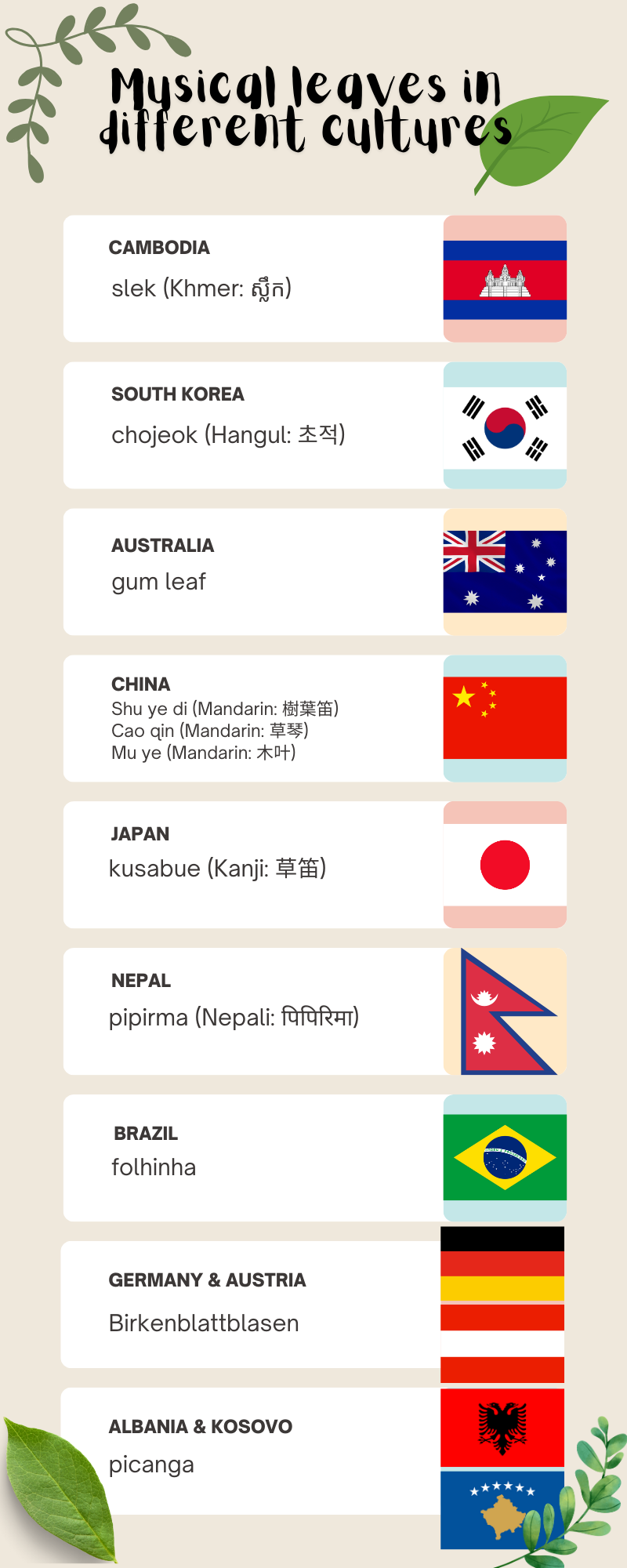
Infographic by Canqi Li
Infographic by Canqi Li
Some plants are even capable of creating beats themselves. An example of this is the Yorkshire forced rhubarb. Grown in the area enclosed by Wakefield, Bradford, and Leeds also known as the Rhubarb Triangle, these rhubarbs spend their first few years in nature before they are brought into forcing sheds for extra sweetness and faster growth. As a result of deprivation from sunlight and the fertile soil, they can sometimes grow so fast that they release a unique popping sound. Some sound artists liked this sound so much that they decided to compile hundreds of thousands of such sounds into a soundtrack.
A compilation of raw Yorkshire forced rhubarb popping sounds. (Soundtrack uploaded by rhubarb, rhubarb, rhubarb)
Between the use of plants purely as instrumental tools and strictly broadcasting their unfiltered sounds lie the works of Michael Prime, an avant-garde musician and self-described sound ecologist. Also an expert in electronic music, Prime amplified the electrical activity of plants using various devices. An example of his music is his track Listen to Peyote, where he amplifies the “voices” of a peyote cactus.
A recording of Michael Prime's Listen to Peyote. (Video uploaded by Michael Prime - Topic)
Another indicator that Natural Symphony is currently not the only one making music using plant signals is that the organisation called electrify for progress has created a market for the sonification of plants, selling sound modification and amplification devices for those interested to experiment with this category of music.
That said, if the initial question asks if the music of Natural Symphony is still unique in some way, the answer might still be a “yes”. While other musicians might also have sonified plant activity, they might have chosen different musical notes or beats for sonification, making the end result sound fundamentally different. So, maybe there does exist a combination of frequencies or sounds that are only present in the works of Natural Symphony.
Now, with all this information about plant music-making in mind, let us return to Natural Symphony.
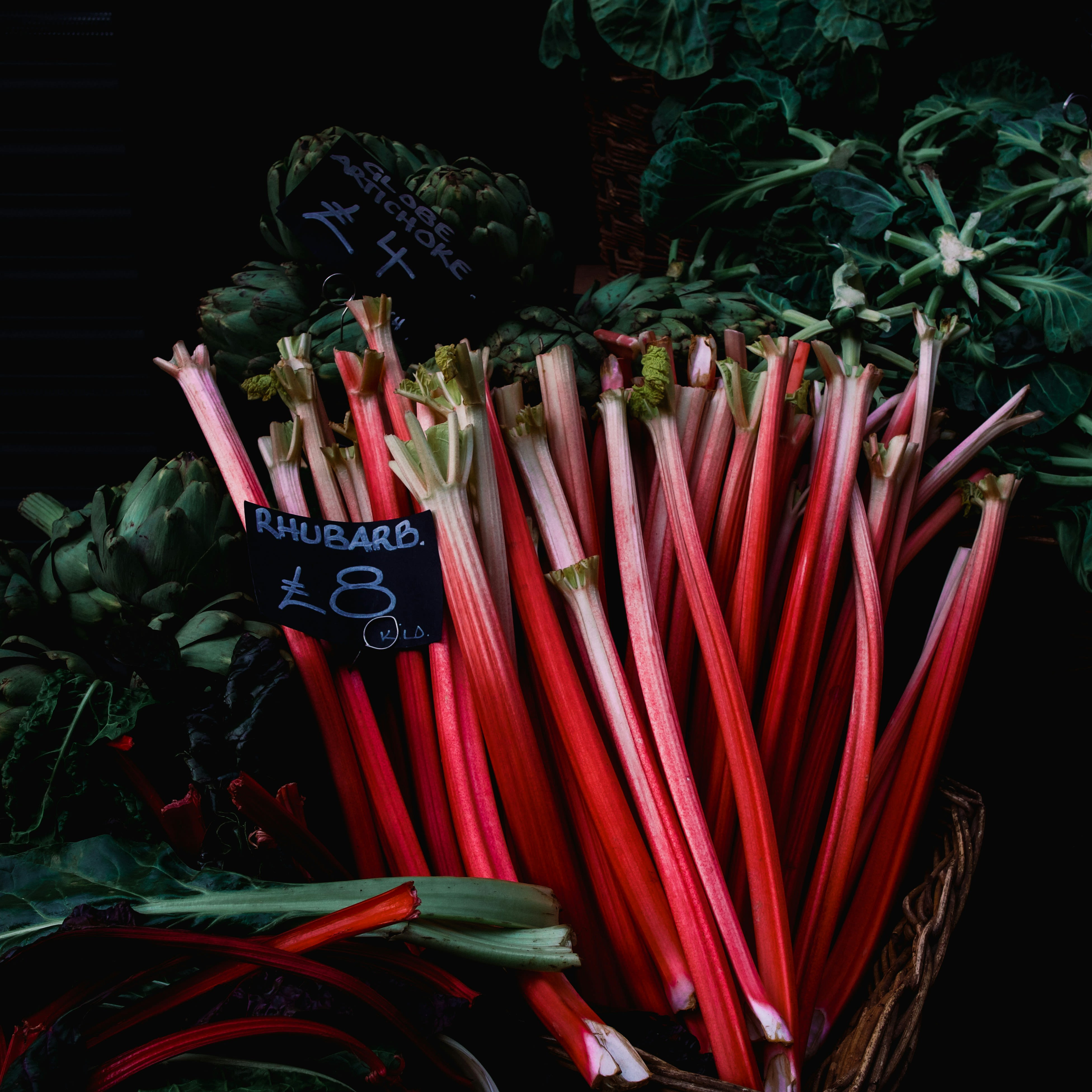
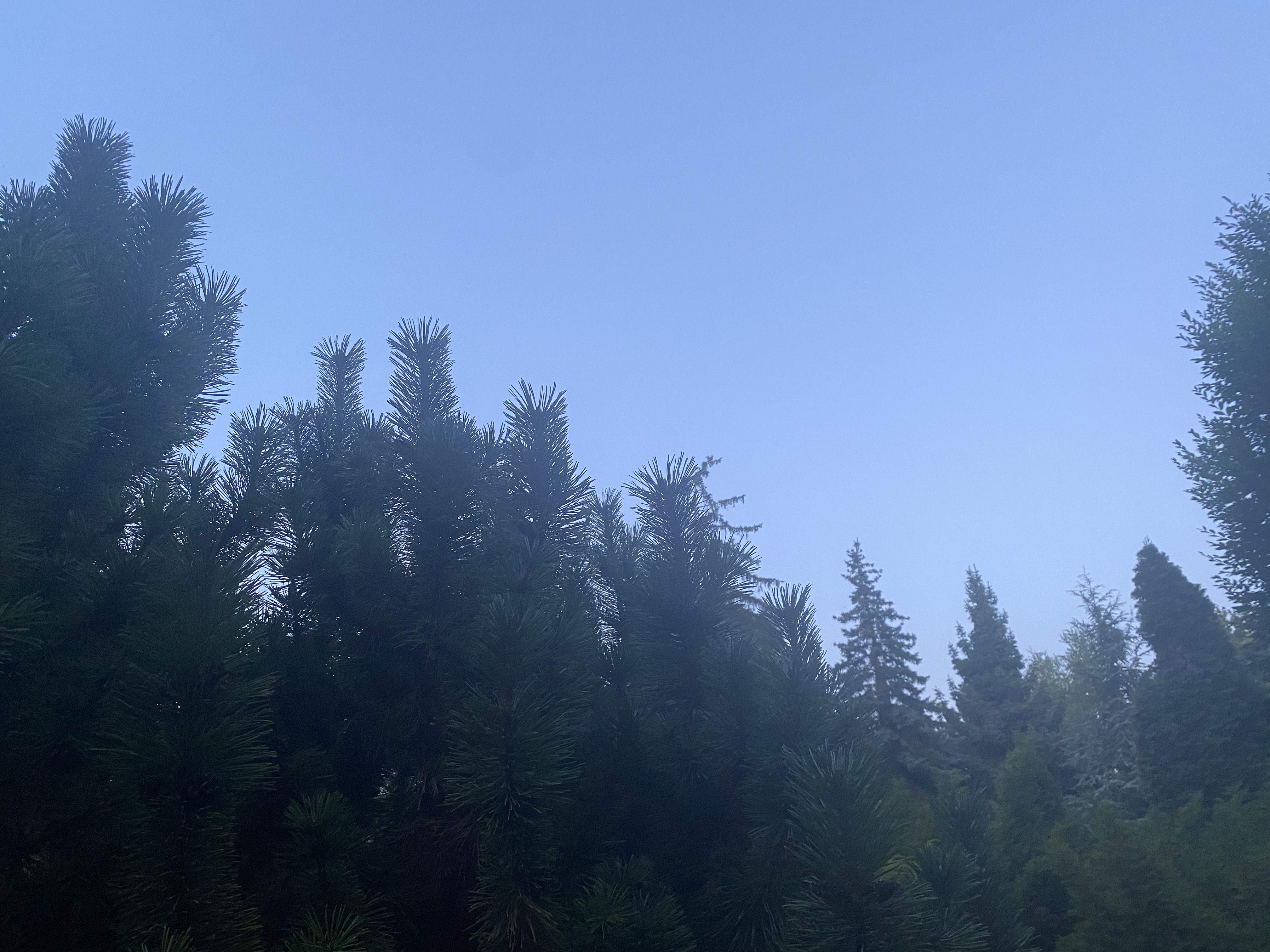
Natural Symphony in action
Earth Day sound and light healing at Fire+Alchemy
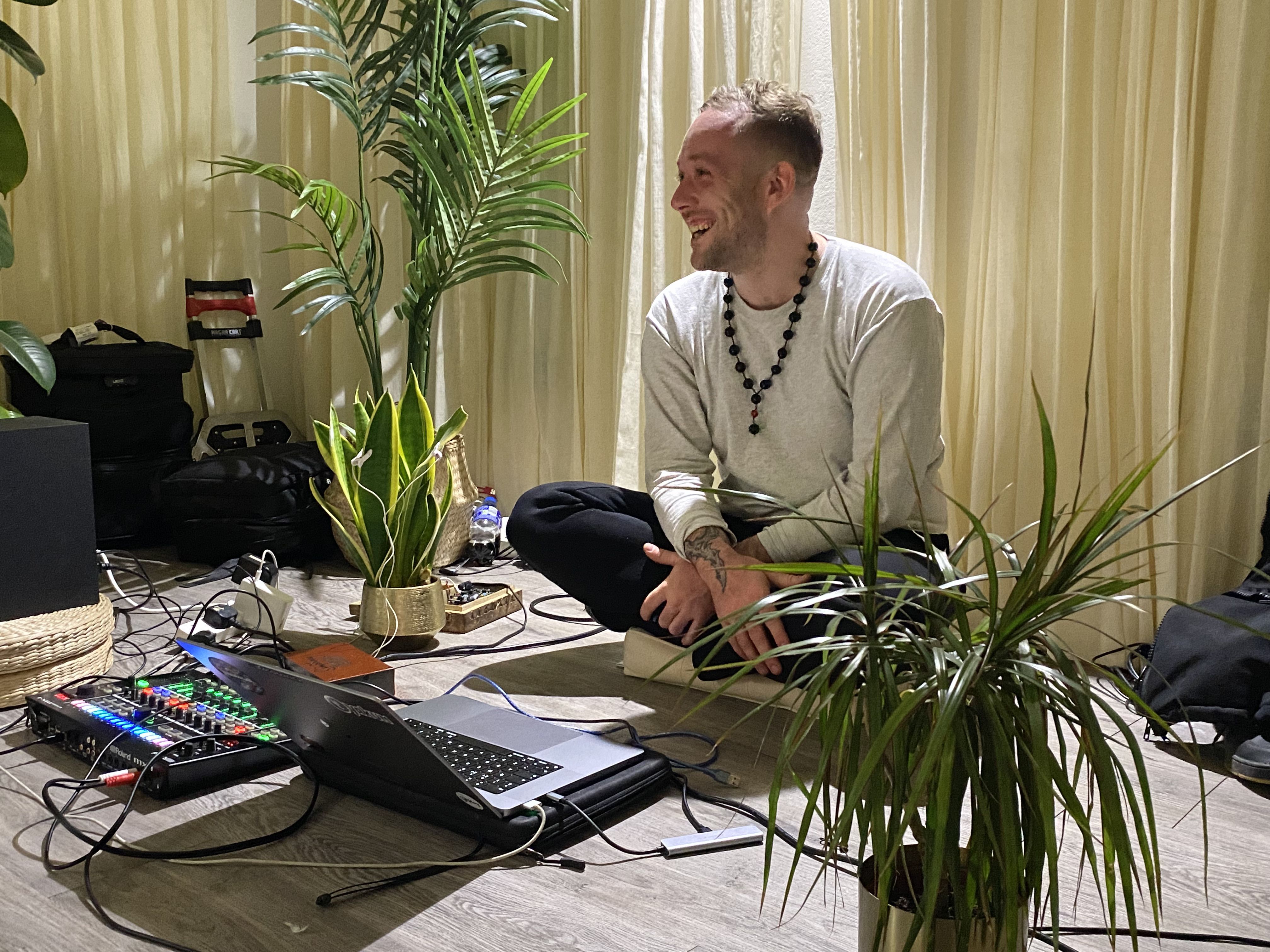
Now that you have learned about the birth and journey of Natural Symphony, let us dive into what one of his live performances looks like.
On April 21, on the occasion of Earth Day, I went to a sound and light healing event he held at Fire + Alchemy, a holistic wellbeing and alternative healing centre in Shoreditch.
After a brief storytelling session where he told the audience seated on yoga mats about his travels to Bali and the Amazon and his artistic transformation, he started the long-awaited healing session that lasted for more than two hours.
As the lights were switched off, I started hearing ambient music full of unusual harmonies. Then, suddenly, the strobe light on the ceiling started flashing at about 7 Hz, the frequency at which the renowned theta waves in the brain – the waves representing extreme relaxation – are supposed to operate. As the healing session progressed, I also recognised sounds that resembled splashes of water, bells, birds, and grasshoppers in the music.
Natural Symphony making music while the strobe light was flashing at around 7 Hz during his Earth Day sound and light healing session. (Video by Canqi Li)
I remained alert throughout the healing session and did not have any trippy hallucinations. But did other audience members have experiences fundamentally different from mine?
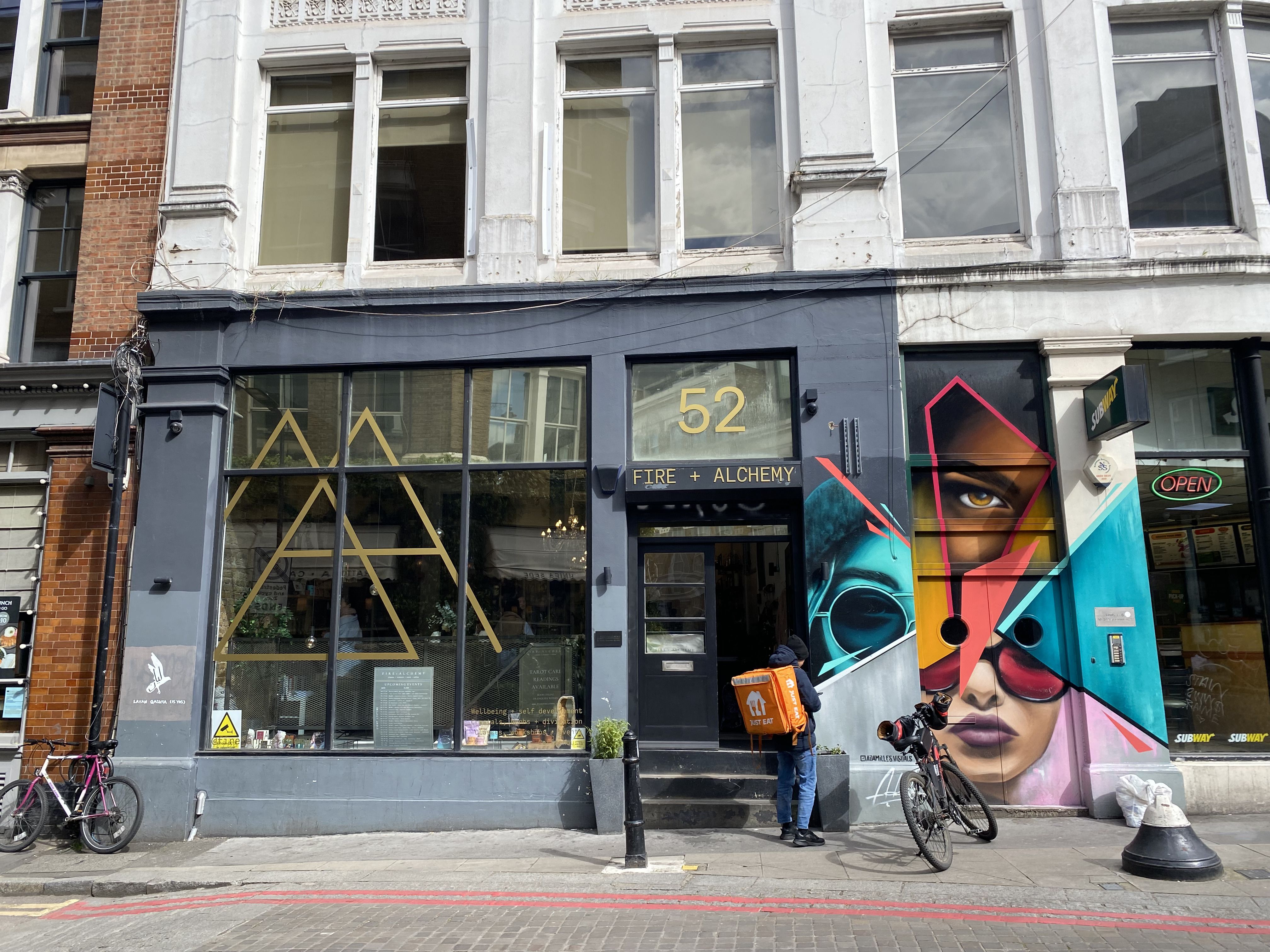
Audience reactions

To find out whether other audience members had experiences very different from mine during Natural Symphony’s light and sound healing session, I conducted some interviews right after the event ended.
Luckily, I was not alone – event attendee Nicole, a therapist in her thirties, did not have any visuals, either, but she said she felt the session grounded and energised her. “Towards the end of the session, I found that comfort zone,” she told me, adding: “The experience was beyond my expectations.”
Listen to more of Nicole’s thoughts on the event here:
Event attendee and therapist in her thirties Nicole expresses her opinions on Natural Symphony's Earth Day sound and light healing session at Fire + Alchemy. (Audio recording by Canqi Li)
That said, child psychotherapist Lucy, 32, had various kinds of visuals during the session. Here is her describing what exactly her visuals looked like:
Event attendee and child psychotherapist Lucy, 32, describes the visuals she experienced during Natural Symphony's Earth Day sound and light healing session at Fire + Alchemy. (Audio recording by Canqi Li)
What is certain is that both Nicole and Lucy loved the event, finding it calming and empowering at the same time.
The "healing powers" of Natural Symphony's music
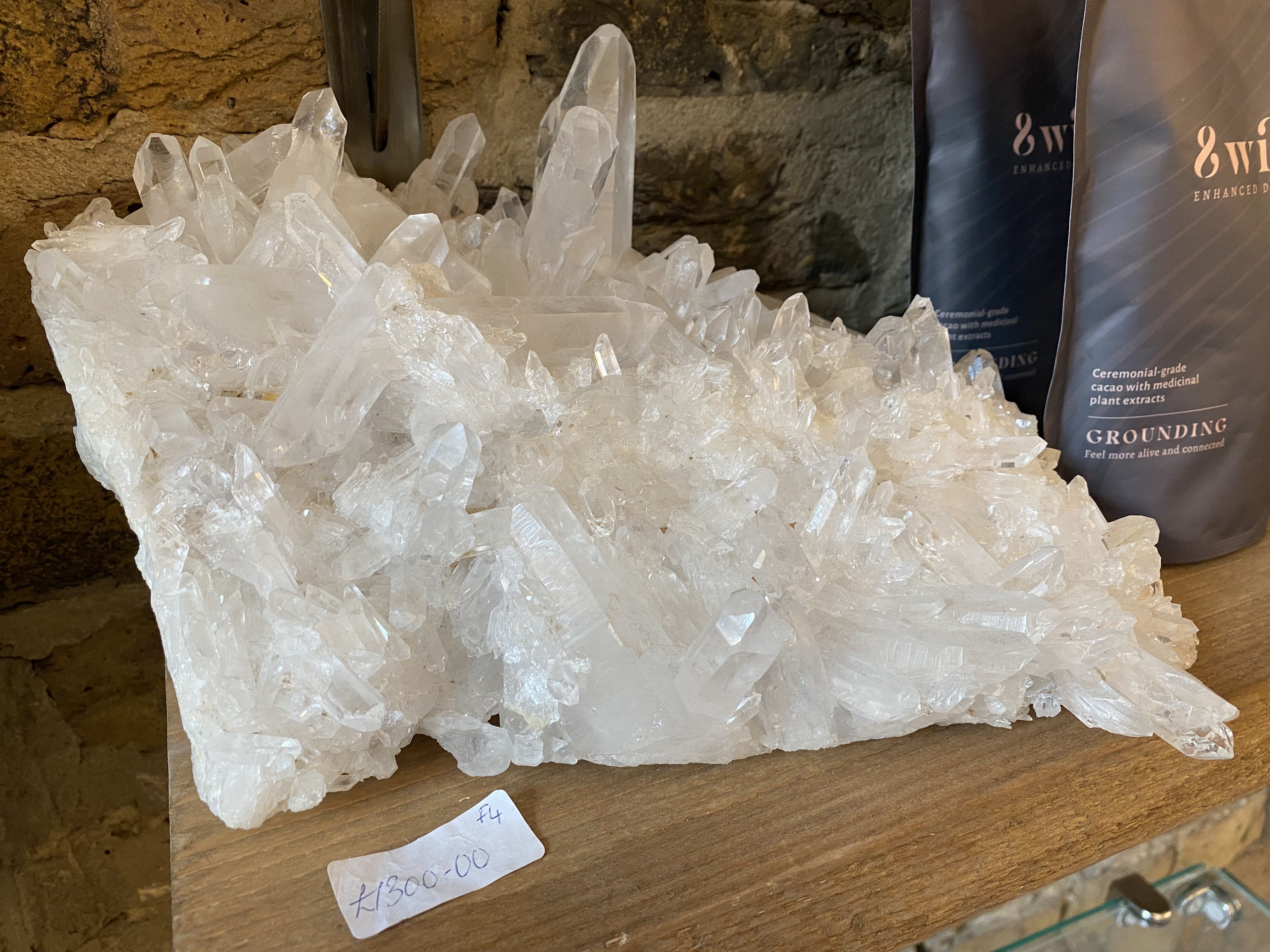
While Natural Symphony is known by many to be a sound and light artist, he also believes he is a healer.
According to him, his events have more of a mental healing effect than a physical one. “A lot of people had profound experiences at my events,” he said, adding that a lot of what he does is to encourage people to reconnect to nature, which in itself has a massive benefit on mental health.
However, he did mention a case of physical healing he had witnessed. “I have had one person who had never had any sensations at all in his legs. He came to one of the sound and light experiences and said that was the first time in five years he had been able to feel heat in his legs,” he recalled.
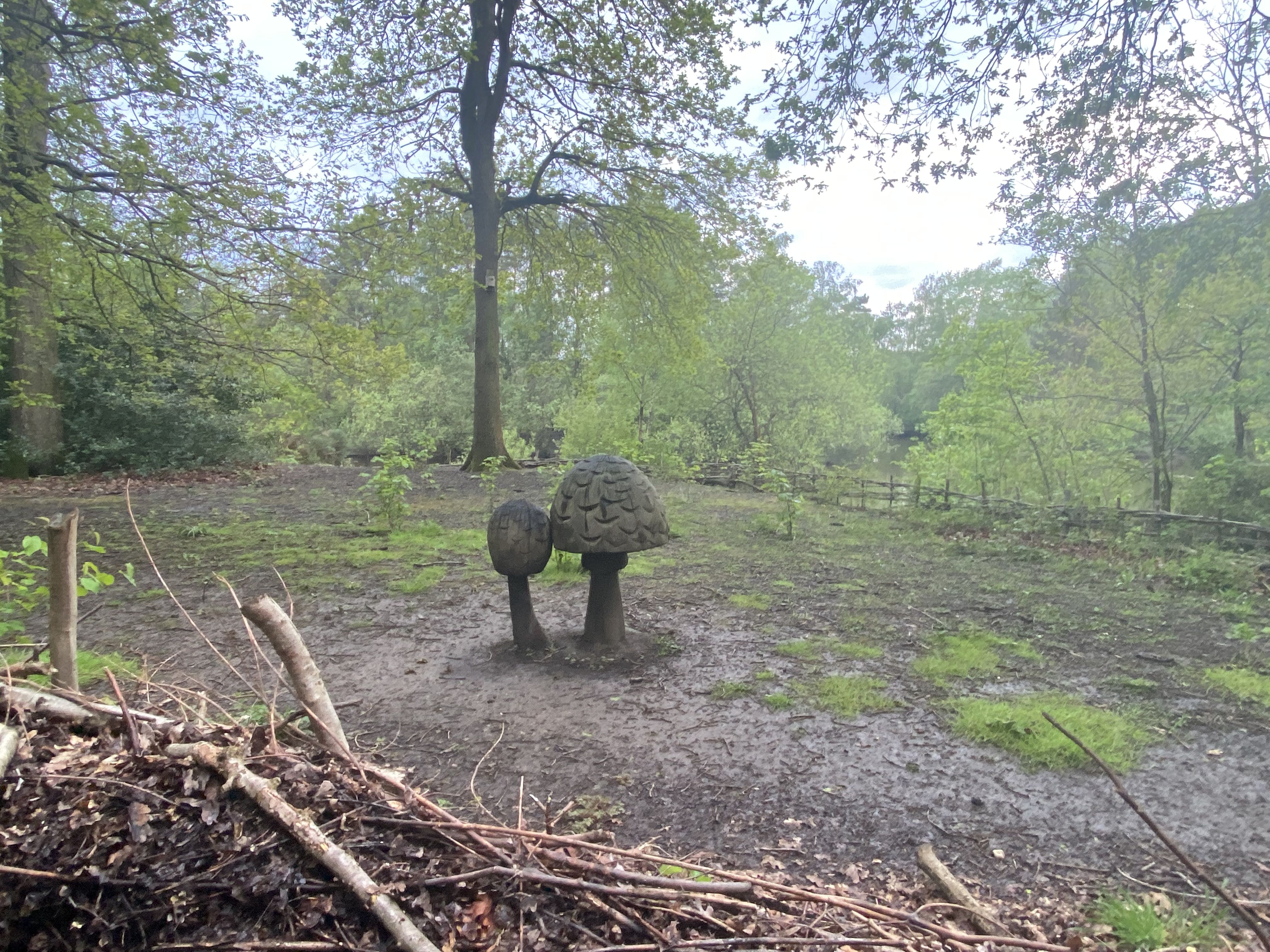
The opinions of music researchers
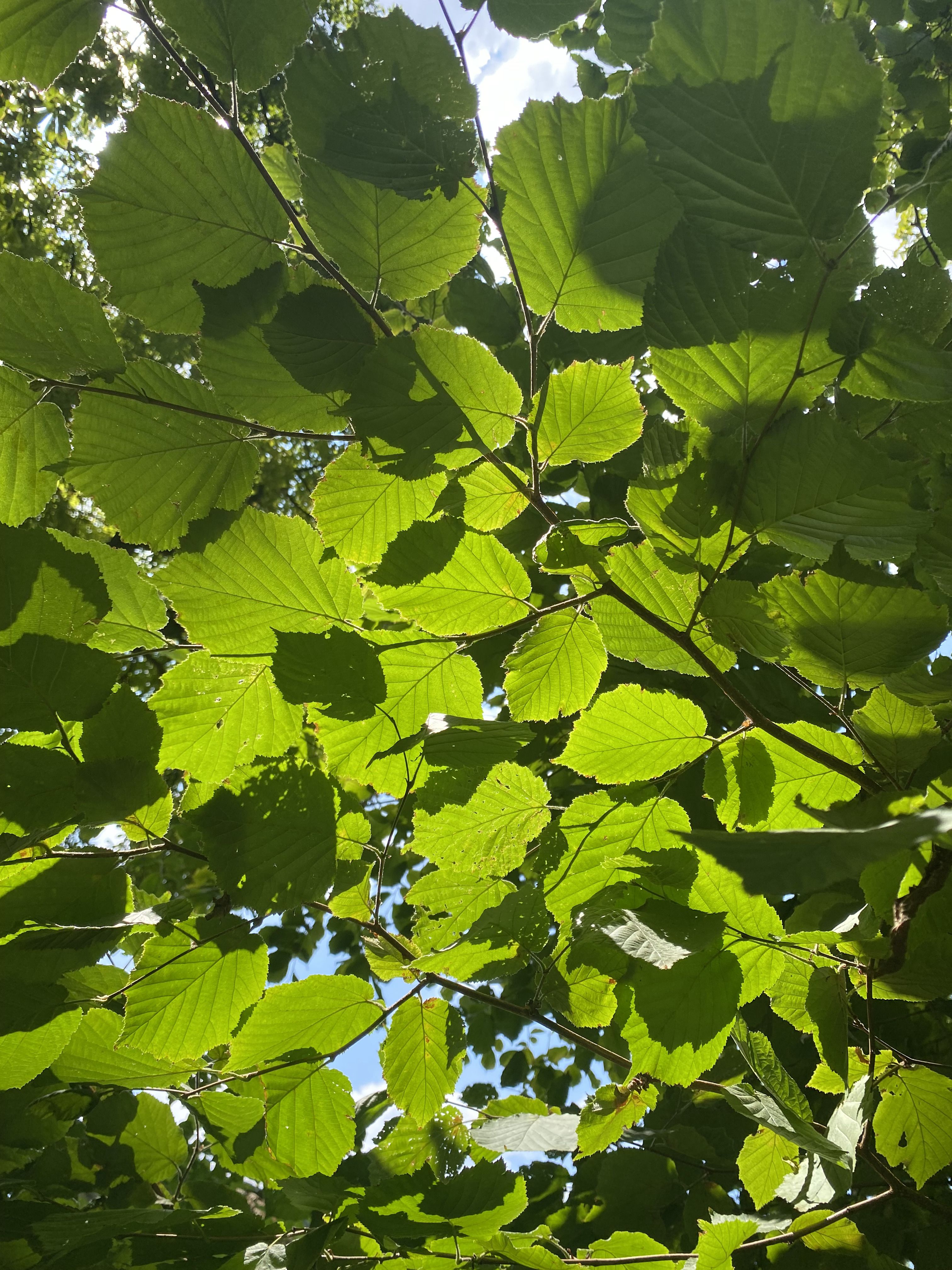
We all know now that Natural Symphony has had quite a unique and adventurous birth and is holding recitals for the sheer enjoyment of art, environmental activism, and healing. But what do music researchers and academics have to say about the artist?
According to John Drever, Professor of Acoustic Ecology and Sound Art at Goldsmiths, University of London, Natural Symphony’s art is ‘powerful and very evocative work’.
“I have no doubt it’s sincere,” he said, adding: “When listening to it, you still hear a very strong sense of ambient dance music language in it, which is different from the works of other artists who don’t try to impose or shift the bioelectric signals of plants into a more recognisable musical language.”
However, Professor Drever is a bit skeptical of mentions of vibrations and healing. “I personally don't understand scientifically how you can generalise around specific sound frequencies to and make particular parts of the body resonate, which is claimed by many to have a healing factor,” he noted.
That said, he ‘would love to learn more’ about the relationship between specific frequencies and vibrations and healing. “As humans, we are multimodal creatures, and our senses are so deeply interconnected – we sometimes forget our hearing mechanism is connected to all of our senses,” he explained. “Sound and image have very powerful hypnotic effects.”
To those interested in going to Natural Symphony’s events, Professor Drever recommends ‘enjoying them and perhaps exploring more and going deeper’.
On the other side of the spectrum, Lecturer in Music Technology at Maynooth University in Ireland Dr Iain McCurdy has ‘lots of skepticism’ towards Natural Symphony’s work.
“My question is whether his approach is simply naive or has something more intentional behind it,” he explained. “One of the main problems from my point of view is that he is using scientific and musical terms like biofeedback loosely and incorrectly – biofeedback with plants is not really possible, because the plant would have to be able to understand the data and respond physiologically to it.”
Dr McCurdy also criticised Natural Symphony’s claim that plants compose and perform his music. “It’s a massive leap of faith – we get electrical resistance across all sorts of things, including the soil and walls,” he said.
WARNING: This video contains flashing lights and therefore may be unsuitable for those suffering from epileptic seizures. (Video uploaded by Natural Symphony)
“I would prefer that he didn't make claims about what the plant was doing and what we were hearing, and just alluded to the limitations of what he's doing there,” Dr McCurdy concluded.
That said, Associate Professor in Music at Maynooth University Dr Gordon Delap thinks it is important to view Natural Symphony’s music in the context of an artistic project as opposed to a scientific one.
He said: “Natural Symphony is determined to make an artistic project that relates to the connection between humans and nature in some way. Whenever you're engaged as a performer, you want to do a few things. You want you want to get an artistic vision across, and part of that might be part of that might revolve around magic or illusion.”
While both Dr Delap and Professor Drever believe different standards apply to artistic and scientific projects, Dr McCurdy thinks otherwise. “Art is absolutely science – we’re applying intuitive mathematics in creating and understanding music. If we start to understand acoustics, for example, it becomes very apparent that it involves things that have been arrived at intuitively, but they are scientifically explainable as being very rational,” he explained.
So, one thing we all can conclude from the comments of these scholars is that there is certainly a lot of controversy surrounding Natural Symphony’s genre of art in music academia.
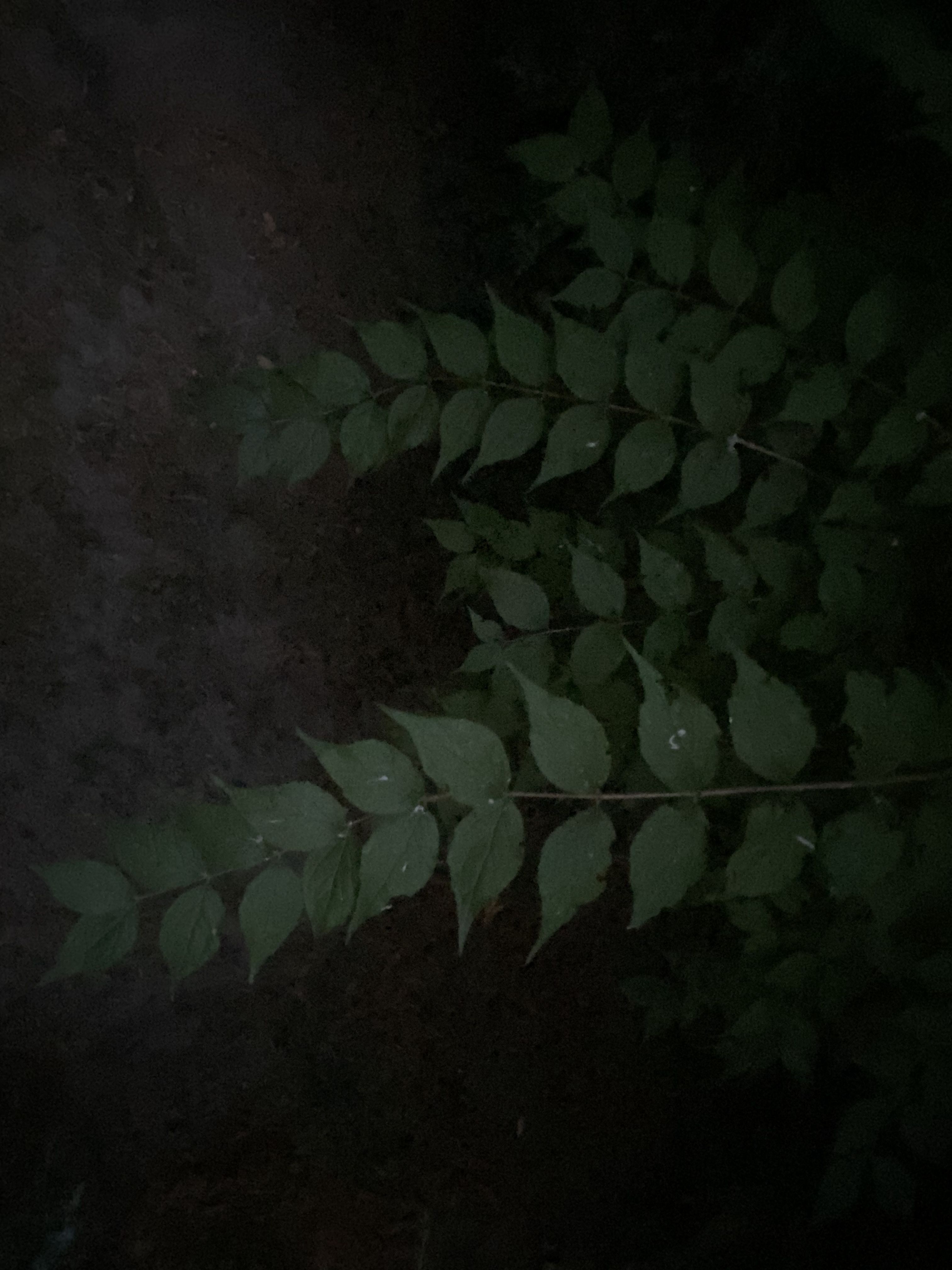
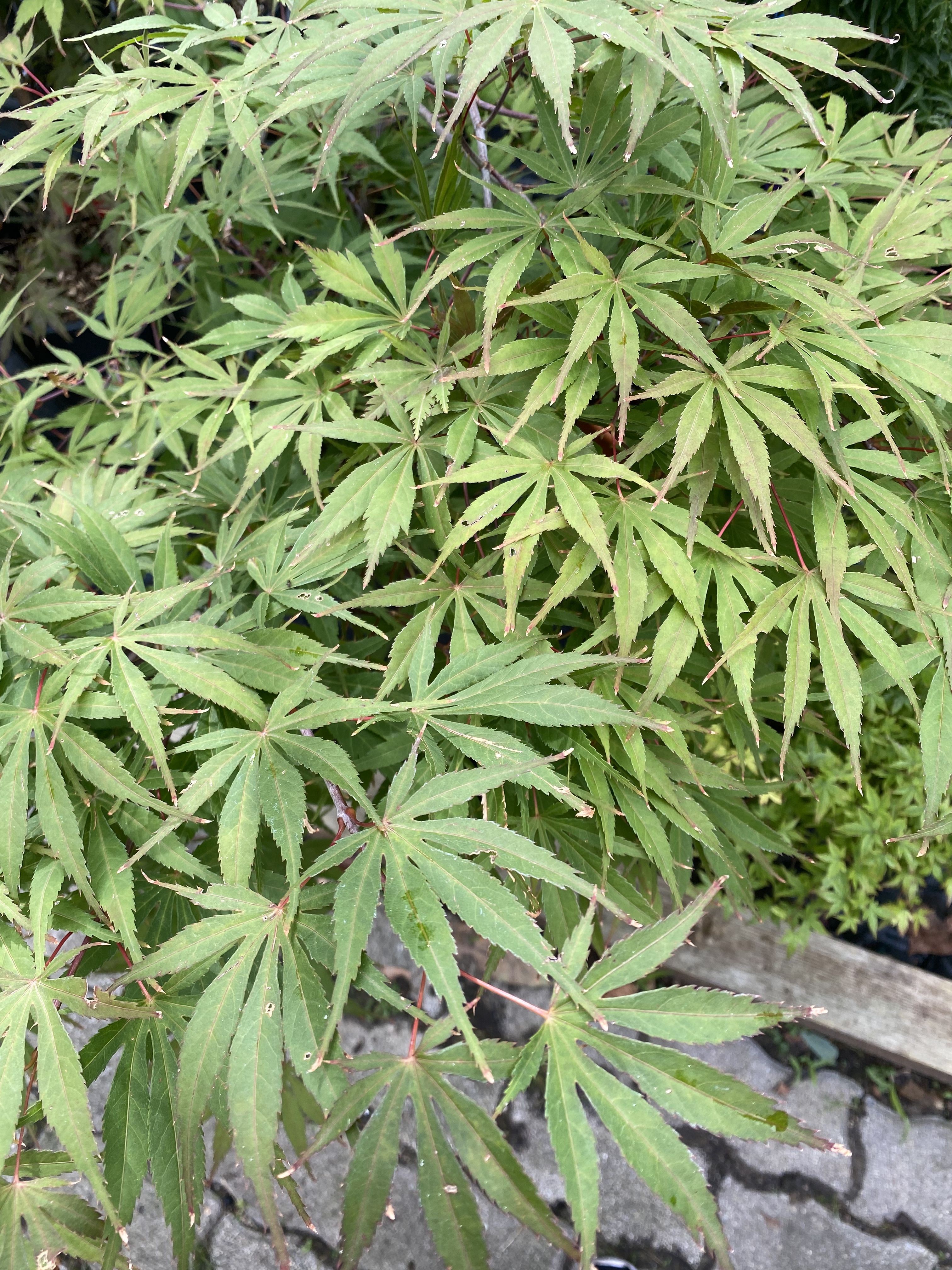

How psychology scholars view Natural Symphony
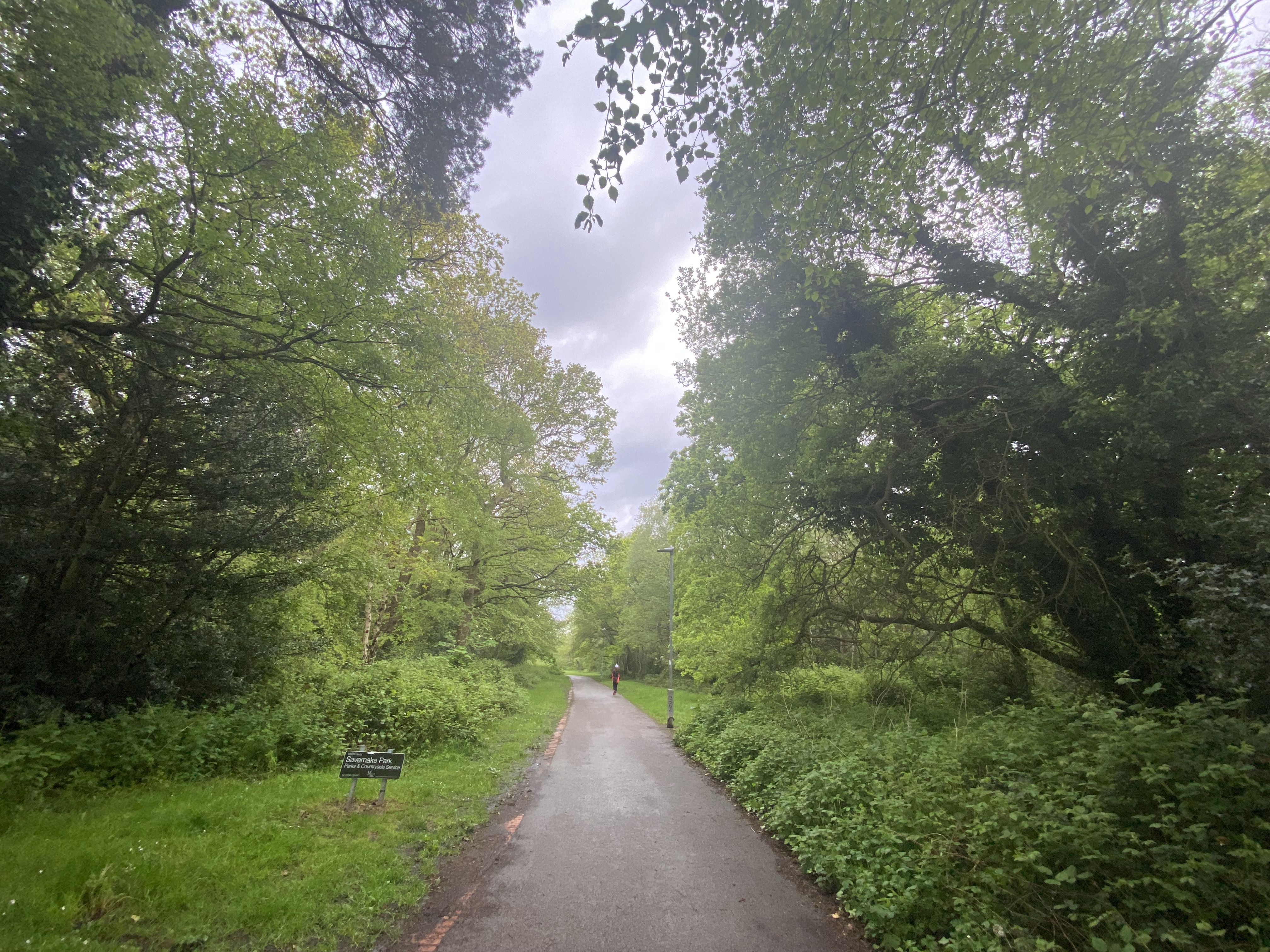
Now that we have explored what academics in music think about Natural Symphony, let us take a look at the opinions of psychology – more specifically, human perception – researchers on the very same topic.
Speaking of rumours about the mind-altering effects of Natural Symphony’s sound and light healing performances, McCaughey Chair of Psychology at the University of Sydney Professor Frans Verstraten amusingly asked: “Have you ever heard of Pokemon seizures?”
After I told him I had no clue what he was referring to, Professor Verstraten said: “Around 700 children were hospitalised in the 1990s in Japan for acute symptoms. These children got seizures from a red-blue flicker that was about 12 Hz in an animated television cartoon, so there does seem to be something in these light frequencies.”
Flashes of the strobe light during Natural Symphony's Earth Day sound and light healing session at Fire + Alchemy on April 21. (Video by Canqi Li)
Referring to Natural Symphony’s healing claims, he continued: “Too many people claim things – I don’t mind when people believe in things and the placebo effect works. But if these artists start replacing doctors or regular medicine, I have serious issues with that.”
According to Professor Verstraten, rhythms can make people feel good and therefore have a positive effect on health, ‘but that’s about it’. “If this kind of music can make you feel relaxed, that’s good, but when the artists start asking money for it, that’s a different and big thing,” he added.
Also from the University of Sydney, Professor of Computational Cognitive Neuroscience Thomas Carlson said that although the frequency at which the strobe light flashes at Natural Symphony’s healing events aligns with some naturally occurring brain waves, these waves are not necessarily induced by music.
“I’d be extremely skeptical about the sound and light healing, particularly when it comes to physical health, as I wouldn’t say there is a scientific basis for this – the state of relaxation at these healing events may be the factor attributing to the healing benefits,” he explained.
Regarding Natural Symphony’s visuals in Bali, Professor Carlson speculated: “What he experienced was most likely a dream and wasn’t necessarily induced by the sounds and light flashes.”
Nevertheless, as a final message to the public, he said: “When you pair this form of art with proper medicine for healing because it makes you feel better about your situation, I don’t think it’s the worst thing in the world.”
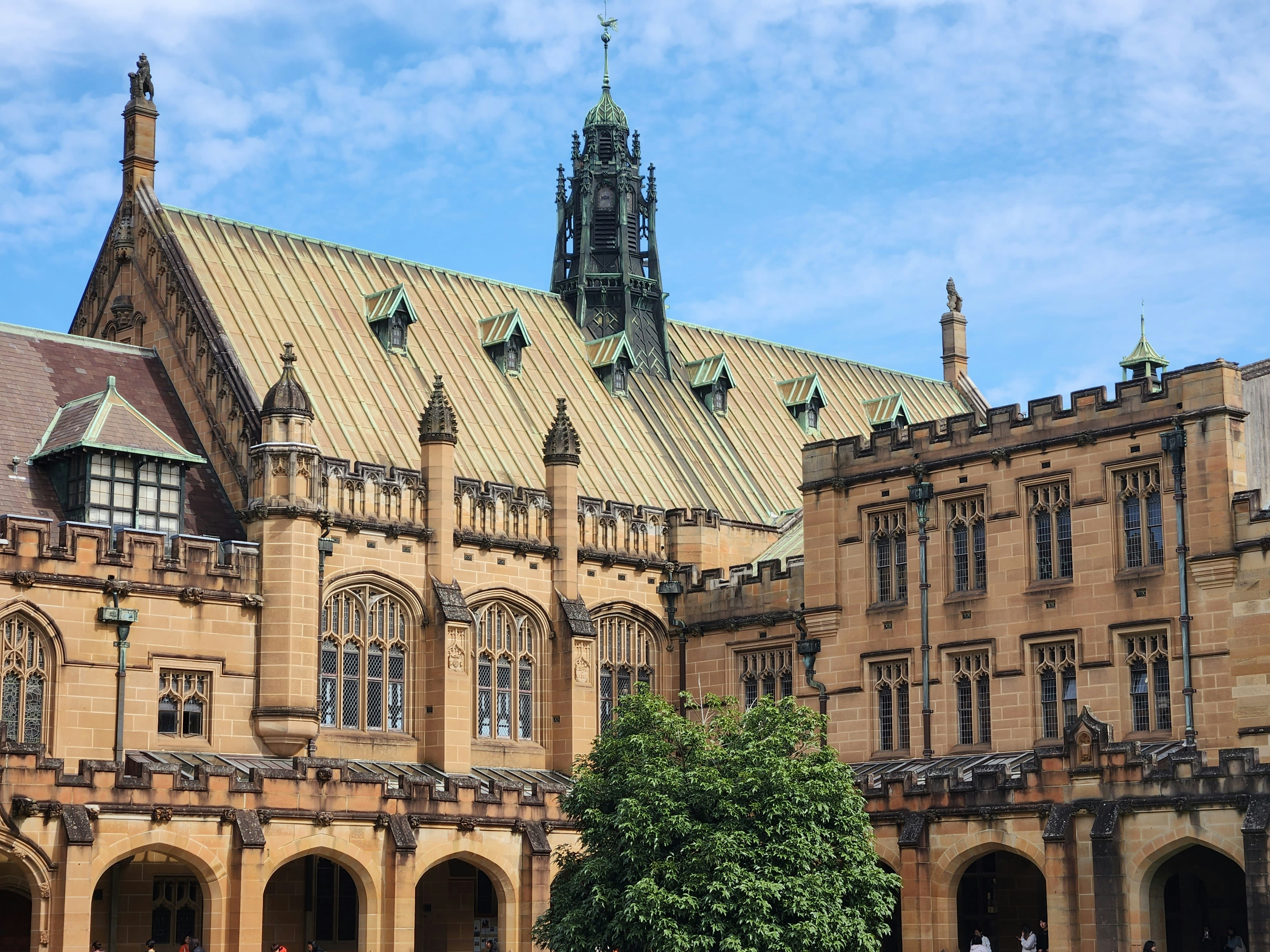
Renaissance architecture of the University of Sydney, where Professors Frans Verstraten and Thomas Carlson work. (Image by Dominic Kurniawan Suryaputra: https://unsplash.com/@d_ks11)
Renaissance architecture of the University of Sydney, where Professors Frans Verstraten and Thomas Carlson work. (Image by Dominic Kurniawan Suryaputra: https://unsplash.com/@d_ks11)
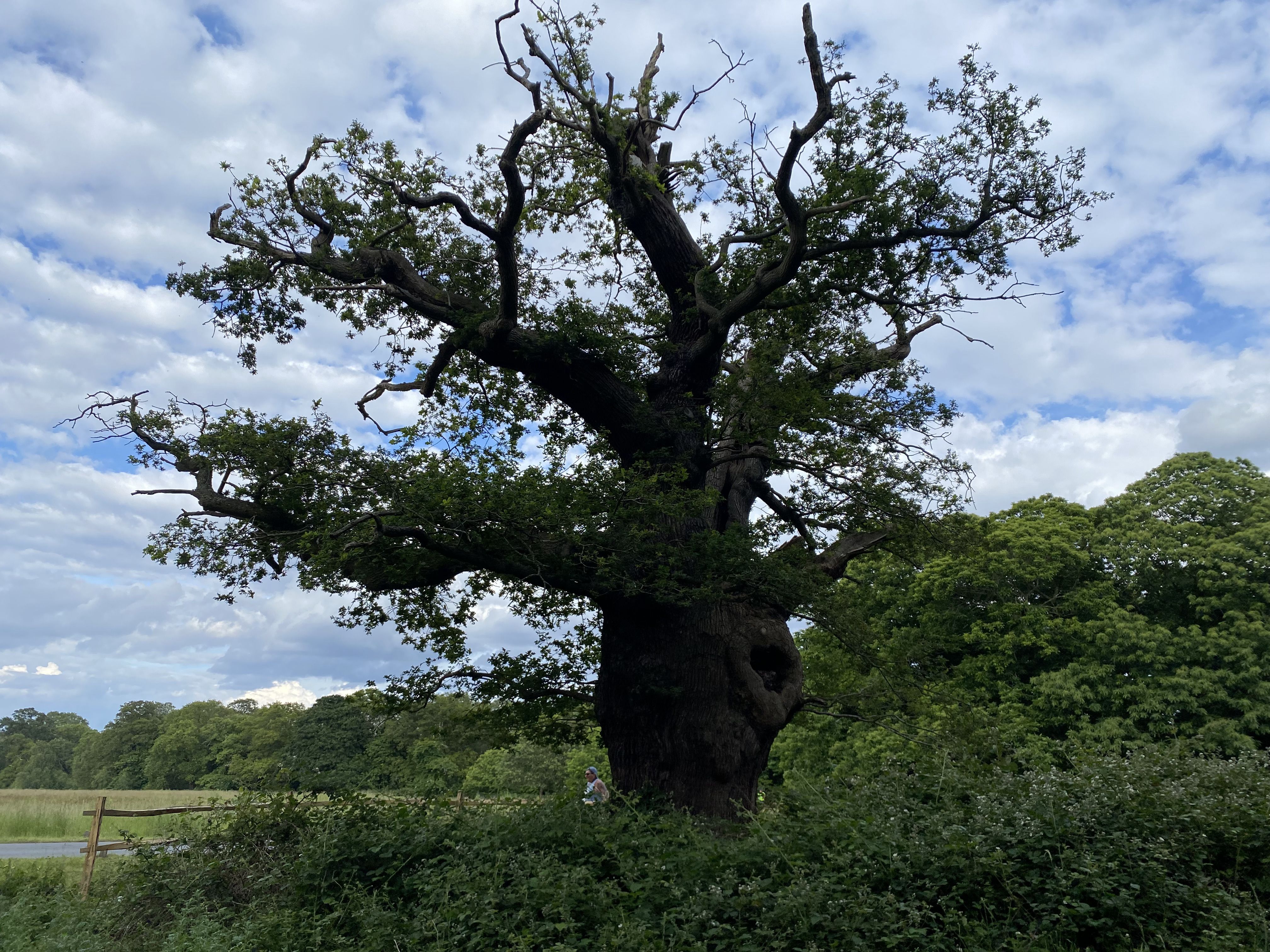
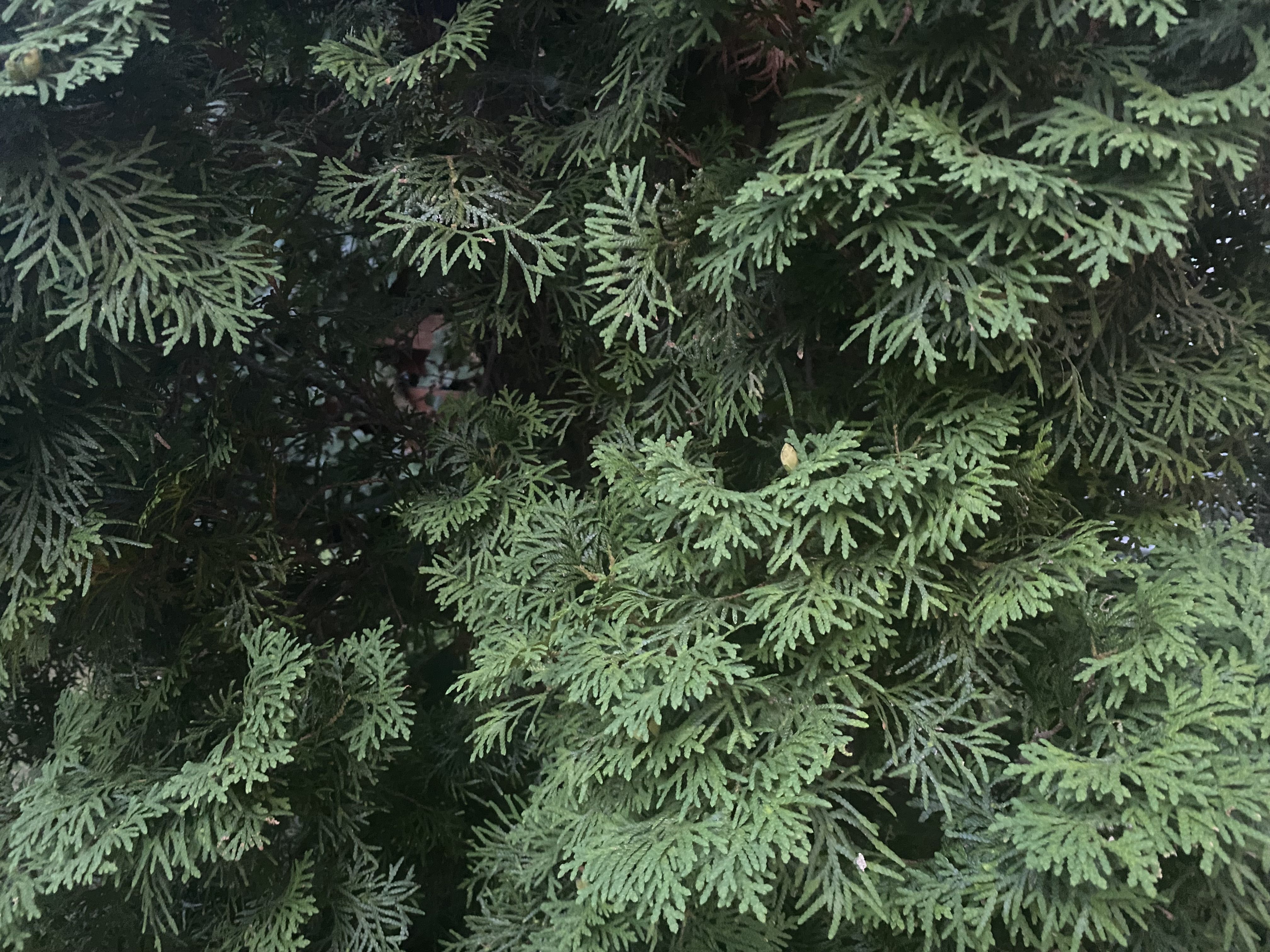
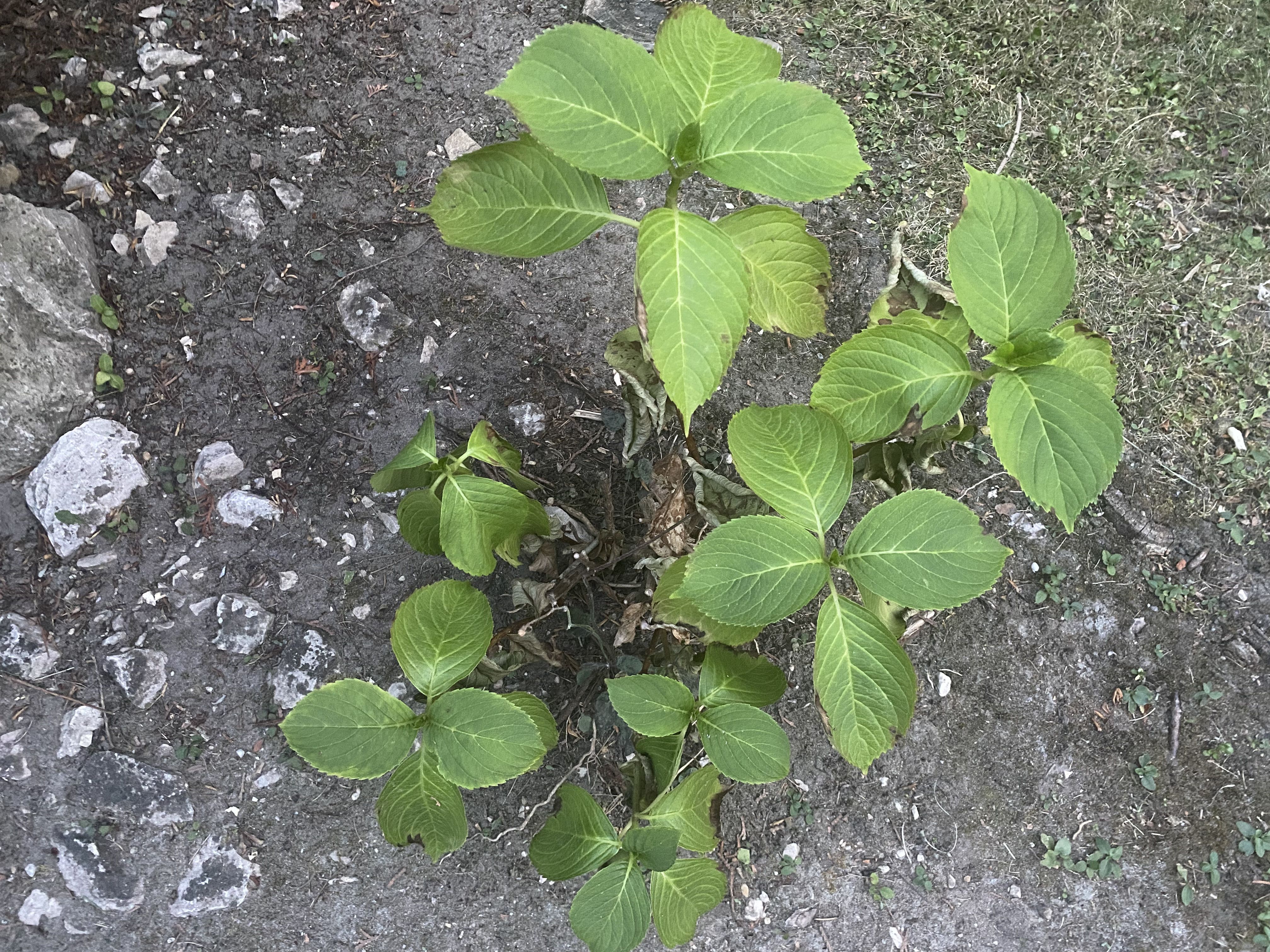
To conclude, from his spiritual awakening in a Bali pyramid to his participation in a nerve-wrecking Amazon chilli and ayahuasca ceremony and his collaboration with plants in music-making, Natural Symphony is definitely a unique artist and individual worth learning about.
Speaking of what your main takeaway from this article should be, you have the freedom to decide it. This article may have provided you with pure entertainment, thought-provoking ideas about contemporary art, or even more curiosity.
Regardless of what your main takeaway is, remember that there is a general consensus among both scientists and music academics that this type of art cannot fully replace conventional medicine when it comes to recovering from physical illness.
That said, Natural Symphony’s art has led to a number of open-ended questions. Is there a need to impose regulations on healing sessions led by artists? How much fiction should be allowed in works of music and visual art? And what is and should be the relationship between art and science?
Whether or not these questions can eventually be answered is for the future to decide.
